
The Power of Passive Investing: More Wealth With Less Work
by
Richard A. Ferri
Published 4 Nov 2010
French, “Multifactor Explanations of Asset Pricing Anomalies,” The Journal of Finance 51 (1996). 16. Mark M. Carhart, “On Persistence in Mutual Fund Performance,” The Journal of Finance 52, no. 1 (March 1997): 80. Chapter 5: Passive Choices Expand 1. John C. Bogle, “The First Index Mutual Fund: A History of Vanguard Index Trust and the Vanguard Index Strategy,” John C. Bogle Research Center, 1996, www.vanguard.com/bogle_site/lib/sp19970401.html. 2. John C. Bogle, 1996. 3. Christopher R. Blake, Edwin J. Elton, and Martin J. Gruber, “The Performance of Bond Mutual Funds” Journal of Business 66, no. 3 (July 1993): 371–403. 4. Marlena Lee, “Is There Skill among Bond Managers?”
…
yield-to-maturity The rate of return an investor would receive if the securities held in his or her portfolio were held until their maturity dates. Notes Preface 1. John C. Bogle, “The Chief Cornerstone,” (speech, Superbowl of Indexing conference, Phoenix, Arizona, December 7, 2005). 2. Charles Ellis, “The Loser’s Game,” Financial Analysts Journal 31, no. 4 (1975): 19–26. 3. Burton Malkiel, interview by Geoff Colvin, Wall Street Week with Fortune, PBS, June 20, 2003, www.pbs.org/wsw/tvprogram/20030620.html. Chapter 1: Framing the Debate 1. Wellington Fund, Prospectus, April 14, 1950, 2. 2. John C. Bogle, “The Economic Role of the Investment Company” (undergraduate thesis, Princeton University Department of Economics and Social Institution, April 21, 1951), 27.
…
The paper points to a Wellington Fund sales brochure as the source for information, “Cost vs. Value,” p. 3, n.d. 3. Bogle, 1951, 15, with further reference to Trusts and Estates, LXXXVIII (August 1949), 495. 4. Burton Malkiel, A Random Walk Down Wall Street (New York: W. W. Norton, 1973), 226. 5. John C. Bogle, “The First Index Mutual Fund: A History of Vanguard Index Trust and the Vanguard Index Strategy,” John C. Bogle Research Center, 1996, www.vanguard.com/bogle_site/lib/sp19970401.html. 6. William F. Sharpe, “Indexed Investing: A Prosaic Way to Beat the Average Investor” (speech, Spring President’s Forum, Monterey Institute of International Studies, May 1, 2002). 7.
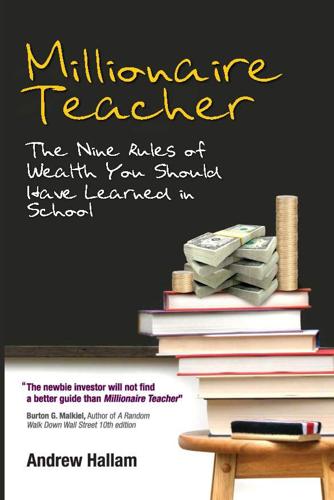
Millionaire Teacher: The Nine Rules of Wealth You Should Have Learned in School
by
Andrew Hallam
Published 1 Nov 2011
Swensen, Unconventional Success, a Fundamental Approach to Personal Investment, 217. 16. Ibid., 266. 17. Ibid. 18. John C. Bogle, Common Sense on Mutual Funds (Hoboken, New Jersey: John Wiley & Sons, 2010), 376. 19. Ibid., 384. 20. John C. Bogle, The Little Book of Common Sense Investing, 61. 21. John C. Bogle, Common Sense on Mutual Funds, 376. 22. Ibid. 23. Dilbert Comics, Reprinted with permission, Order Receipt #1591582. 24. John C. Bogle, The Little Book of Common Sense Investing, 90. 25. John C. Bogle, Don’t Count On It! (Hoboken, New Jersey: John Wiley & Sons, 2011), 382. 26. Burton Malkiel, The Random Walk Guide to Investing (New York: Norton, 2003), 130. 27.
…
By building a responsible portfolio of stock and bond indexes, you’ll create more stability in your account while providing opportunities to take advantage of stock market silliness. The next chapter will show you in detail how to achieve this in the simplest, possible way. Notes 1. John C. Bogle, The Little Book of Common Sense Investing (Hoboken, New Jersey: John Wiley & Sons, 2007), 51. 2. Ibid. 3. John C. Bogle, Common Sense on Mutual Funds (Hoboken, New Jersey: John Wiley & Sons, 2010), 28. 4. Jeremy Siegel, Stocks for the Long Run (New York: McGraw-Hill, 2002), 217–218. 5. Ken Fisher, The Only Three Questions That Count (Hoboken, New Jersey: John Wiley & Sons, 2007), 279. 6.
…
If an adviser had decided to purchase Morningstar’s five-star rated funds for you in 1994, and if he sold them as the funds slipped in the rankings (replacing them with the newly selected five-star funds), how do you think the investor would have performed from 1994 to 2004 compared with a broad-based U.S. stock market index fund? Thanks to Hulbert’s Financial Digest, an investment newsletter that rates the performance predictions of other newsletters, we have the answer which is emphasized in Figure 3.2. Figure 3.2 Five-Star Funds vs. Total Stock Market Index (1994–2004) Source: John C. Bogle, The Little Book of Common Sense Investing One hundred dollars invested and continually adjusted to only hold the highest rated Morningstar funds from 1994 to 2004 would have turned into roughly $194, averaging 6.9 percent annually. One hundred dollars invested in a broad-based U.S. stock market index from 1994 to 2004 would have turned into roughly $283, averaging 11 percent annually.24 If you add further taxable liabilities, the results for the Morningstar superfunds would look even worse.
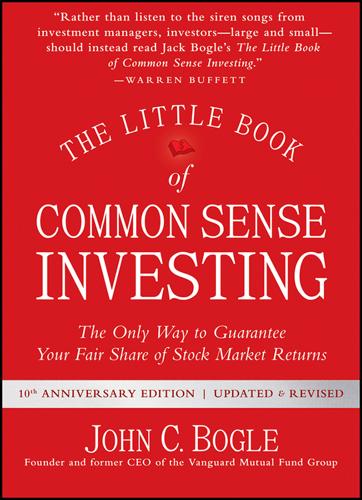
The Little Book of Common Sense Investing: The Only Way to Guarantee Your Fair Share of Stock Market Returns
by
John C. Bogle
Published 1 Jan 2007
Speculation —Foreword by Arthur Levitt 2017 The Little Book of Common Sense Investing: 10th Anniversary Edition | Updated & Revised THE LITTLE BOOK OF COMMON SENSE INVESTING The Only Way to Guarantee Your Fair Share of Stock Market Returns 10th Anniversary Edition | Updated & Revised JOHN C. BOGLE Cover design: Wiley Copyright © 2017 by John C. Bogle. All rights reserved. Published by John Wiley & Sons, Inc., Hoboken, New Jersey. First edition published 2007 by John Wiley & Sons, Inc. Published simultaneously in Canada. No part of this publication may be reproduced, stored in a retrieval system, or transmitted in any form or by any means, electronic, mechanical, photocopying, recording, scanning, or otherwise, except as permitted under Section 107 or 108 of the 1976 United States Copyright Act, without either the prior written permission of the Publisher, or authorization through payment of the appropriate per-copy fee to the Copyright Clearance Center, Inc., 222 Rosewood Drive, Danvers, MA 01923, (978) 750-8400, fax (978) 646-8600, or on the Web at www.copyright.com.
…
Covel The Little Book of Alternative Investments by Ben Stein and Phil DeMuth The Little Book of Valuation by Aswath Damodaran The Little Book of Bull’s Eye Investing by John Mauldin The Little Book of Emerging Markets by Mark Mobius The Little Book of Hedge Funds by Anthony Scaramucci The Little Book of the Shrinking Dollar by Addison Wiggin Books by John C. Bogle 1994 Bogle on Mutual Funds: New Perspectives for the Intelligent Investor —Foreword by Paul A. Samuelson 1999 Common Sense on Mutual Funds: New Imperatives for the Intelligent Investor —Foreword by Peter L. Bernstein 2001 John Bogle on Investing: The First 50 Years —Foreword by Paul A. Volcker, Introduction by Chancellor William T. Allen 2002 Character Counts: The Creation and Building of the Vanguard Group 2005 The Battle for the Soul of Capitalism —Foreword by Peter G.
…
Each book offers a unique perspective on investing, allowing the reader to pick and choose from the very best in investment advice today. Books in the Little Book Big Profits series include: The Little Book That Still Beats the Market by Joel Greenblatt The Little Book of Value Investing by Christopher Browne The Little Book of Common Sense Investing by John C. Bogle The Little Book That Makes You Rich by Louis Navellier The Little Book That Builds Wealth by Pat Dorsey The Little Book That Saves Your Assets by David M. Darst The Little Book of Bull Moves by Peter D. Schiff The Little Book of Main Street Money by Jonathan Clements The Little Book of Safe Money by Jason Zweig The Little Book of Behavioral Investing by James Montier The Little Book of Big Dividends by Charles B.

The Smartest Investment Book You'll Ever Read: The Simple, Stress-Free Way to Reach Your Investment Goals
by
Daniel R. Solin
Published 7 Nov 2006
They attempt to find a "hot" fund that will beat the markets, and suffer the inevitable costly consequences. Smart Investors don't chase "hot" funds. Chapter 14 Nobody Can Time the Market But you know as well as I that theres simply no evidence that fonds have been successfol at market timing. - Remarks by John C. Bogle, founder, the Vanguard Group, president. Bogle Financial Markets Research Center, to the Bullseye 2000 Conference, Toronto, Canada, December 4, 2000. Reported at: h ttp://www.vanguard.com/boglc_site/ december042000.hrm1 If anyone could consistently time the market, you would think it would be the amhors of markcHiming newsletters.
…
Chapter 36 Step 3: Select Your Investments Surprisingly, one-third ofall index funds carry either front-end or asset-based sales charges. Why an investor would opt to pay a commission on an index fond when a substantially identical fimd is available without a commission remains a mystery. -John C. Bogle, Common Sense on Mutual Funds This step is the easy part. All we know about the srock and bond markets is that over time both will go up in value. As I have explained, no one can predict which stock or which bond will increase in value, or when it will increase. And no one wi ll know when or by how much the entire market will increase in value.
…
But those of us who advise our clients to become Smart Investors have been abdicating our responsibility to advise the millions of Hyperactive Investors. Perhaps it is because we have no financial incentive to provide this advice since, as I have said, most Smart Investors do not need our services to reach their financial goals. The Vanguard Group, and especially the company's founder, John Bogle, is a notable exception to this rule. It was Bogle and Vanguard that created the opportunity for all investors to invest for market returns, by establishing index funds with low initial investments (as little as US$2500), low annual expenses and a coherent set of marketing materials. Unfortunately, regulations enacted by the Ontario Securities Commission and provincial securities regulators make it difficult, if not impossible, for Canadian investors to purchase these funds Of, for that matter, to access other lower cost index funds available to U .S. residents.
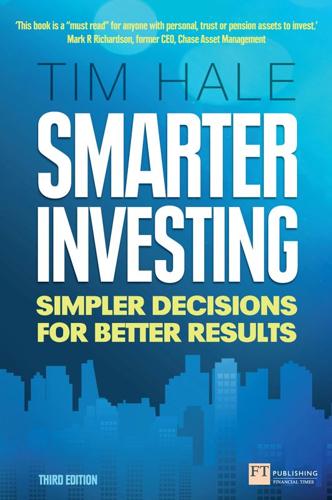
Smarter Investing
by
Tim Hale
Published 2 Sep 2014
This is an excellent book that I read in 1994, and wished I had done sooner. It is Charles Ellis’ insight into the ‘losing-the-fewest points’ strategy that underpins the philosophy that we developed – an easy and entertaining read. The Little Book of Common Sense Investing, John C. Bogle, John Wiley & Sons, 2010 (ISBN 978–0–470–10210–7). John Bogle is the grandfather of sensible, low cost investing. He has written several key books on investing and the state of both the investment industry and capitalism in general. This short book contains the essence of his thinking and makes a very compelling case for a ‘losing the fewest points’ approach.
…
market capitalisation emerging markets market efficiency market returns market risk, 2nd equities, 2nd market timing, 2nd, 3rd, 4th, 5th and DIY investors winning points from market-based returns market-beating strategies see active management/managers markets falling trying and failing to beat the market, 2nd, 3rd, 4th Marshall, Ray maturity (interest rate) risk, 2nd Meriwether, John Modern Portfolio Theory (MPT), 2nd money-weighted returns Morningstar, 2nd MPT (Modern Portfolio Theory) MSCI Emerging Markets Index MSCI World Index mutual funds, 2nd, 3rd MVO (means-variance optimisation) software Myners Report National Savings Certificates nest eggs noise and confusion reducing, 2nd Northern Rock Norway OEICs (open-ended investment companies), 2nd, 3rd, 4th lifestyle, risk-managed product choices off-menu assets, 2nd commodity futures gold hedge funds, 2nd, 3rd private equity, 2nd structured products, 2nd on-menu assets, 2nd, 3rd bonds commercial property defensive asset classes developed global equity markets emerging markets Return Engine asset classes smaller companies value equities online brokerage accounts, 2nd, 3rd, 4th, 5th administration optimisation software passive investors, 2nd fund costs index lifestyle/risk-managed funds product choices passive index fund providers vs active investors, 2nd, 3rd Paulson, John pensions active funds, 2nd contribution rates investing for retirement, 2nd estimating how much to save misselling target date funds tax on performance active managers and performance over time short-term, 2nd see also risk and return philanthropic works philosophy-free investing Piattelli-Palmarini, Massimo pitfalls for investors portfolio choices, 2nd financial capacity for losses financial need to take risk and gold risk profile/emotional tolerance for losses six Smarter portfolios summary matrix portfolio construction, 2nd, 3rd 90/10 portfolios approach to blended, 2nd bonds, 2nd, 3rd Defensive Mix diversification, 2nd, 3rd, 4th, 5th global, 2nd, 3rd, 4th, 5th, 6th and DIY investors emerging markets, 2nd, 3rd, 4th, 5th, 6th equity market diversifiers, 2nd growth-oriented Return Engine, 2nd long-term investors Modern Portfolio Theory (MPT), 2nd non-GBP currency exposure, 2nd past and future events smaller and value companies, 2nd, 3rd see also asset mix portfolios and DIY investors implementation, 2nd, 3rd maintenance, 2nd obsessive monitoring of rebalancing, 2nd, 3rd smarter and the stockbroking model taking an income from in retirement see also asset mix private equity, 2nd probability problems product choices, 2nd building-block benchmark choices choosing your market benchmark/proxy exchange-traded funds (ETFs) global home bias index-fund investing investment trusts lifestyle/risk-managed OEICs, 2nd mapping funds to passive products target date funds unit trusts/OEICs, 2nd product engineering psychometric testing, 2nd, 3rd rational thinking, 2nd, 3rd avoiding irrational behaviour REITs (global real estate), 2nd, 3rd, 4th, 5th return and risk characteristics, 2nd residual risk retirement, investing for, 2nd estimating how much to save return capture Return Engine asset classes developed global equity markets performance portfolio construction, 2nd returns and the average investor bonds conventional inflation-linked commodity futures developed global equity markets emerging markets on equities, and industry costs estimating future gold hedge funds improving on investment policy returns market returns and market timing market-based money-weighted REITs (global real estate), 2nd return history of building blocks time-weighted value equities see also risk and return risk, 2nd, 3rd, 4th bonds, 2nd choices of asset classes currency risk defensive assets equity risk, 2nd, 3rd five key investment risk factors and global diversification handling and hazards limited choices market risk, 2nd and portfolio choices REITs, 2nd residual risk-free assets smaller companies value equities, 2nd risk profiling, 2nd, 3rd psychometric testing risk and return, 2nd bonds conventional inflation-linked commodity futures defensive assets developed global equity markets emerging markets gold hedge funds and portfolio construction private equity REITs, 2nd Return Engine asset classes, 2nd smaller companies, 2nd structured products value equities, 2nd, 3rd risk tolerance and portfolio choices, 2nd risk-managed OEICs ROF (rip off factor) Samsung Electronics saving for retirement versus smarter investing, 2nd school fees Schwab, Charles Schwed, Fred, 2nd securities selection of, 2nd and active managers transfers to online accounts Selftrade Sharpe, William, 2nd, 3rd Shiller, Robert Siegel, Laurence Sinquefield, Rex Sippdeal Sipps smaller companies portfolio construction, 2nd, 3rd product choices, 2nd, 3rd benchmarks return and risk characteristics, 2nd size risk, 2nd the small-cap premium, 2nd, 3rd Spain Standard Chartered Bank stock market crashes stockbroking model strategic asset allocation structural risk on bonds structured products, 2nd and dividends principal protection risk and return Swensen, David, 2nd, 3rd, 4th, 5th on hedge funds on private equity tactical asset allocation see market timing Tanous, Peter target date funds taxes, 2nd, 3rd DIY investors, 2nd, 3rd, 4th personal allowances TER (total expense ratio) time-weighted returns Tobin, James Separation Theorem, 2nd ‘too good to be true’ investments, 2nd top-down approach total equity market total-expense ratios tracker funds see index funds tracking error fees and costs contributing to management experience effect on replication methods affecting size contributing to turnover contributing to Trump, Donald Tversky, Amos, 2nd unit trusts, 2nd, 3rd, 4th United Kingdom active funds, research on performance, 2nd equity funds and diversification industry costs of product choices underperforming the market FTSE 100 Index, 2nd, 3rd, 4th FTSE All-Share Index, 2nd, 3rd, 4th, 5th FTSE Index-linked gilts gilts, 2nd, 3rd, 4th, 5th, 6th and global equity markets index-linked investor behaviour and portfolio construction, global diversification tax breaks United States behaviour of average investors CGM Focus Fund equity fund performance index tracker funds private equity research on active management Russell 1000 Index treasuries Wilshire 5000 university fees value companies, 2nd, 3rd dividends outperformance of growth stocks portfolio construction, 2nd, 3rd product choices, 2nd benchmarks return and risk characteristics, 2nd, 3rd past returns Vanguard, 2nd, 3rd research on UK actively managed funds, 2nd venture capital, 2nd Vinik, Jeff Vodafone volatility bonds equity markets wealth creation ‘get rich, slow’ process wealth-destroying behaviour, 2nd, 3rd zero-sum game and hedge funds and investment philosophy, 2nd ‘A book of investment wisdom and common sense for the ages. Investors who follow his simple advice will be richly rewarded.’ John C. Bogle, Founder, Vanguard ‘Delightfully clear thinking and direct advice on how investors can get better results with simpler decisions.’ Charles D. Ellis, Founder, Greenwich Associates ‘An excellent step-by-step guide to the basics, as well as the complexities, of personal investment. This book gives you what you need to plan your investment strategy with confidence and sleep easy at night.’
…
It probably makes sense to have a material allocation to other developed and emerging markets too. Equities, while expected to deliver higher returns than bonds, deliver no certainty that they will do so, although the odds increase over time. Diversifying away from equities and holding other assets such as bonds makes sense. As John Bogle, founder of Vanguard, a leading, global investment firm, says: ‘Asset allocation [the mix of your investments] is not a panacea. It is a reasoned – if imperfect – approach to the inevitable uncertainty of the financial markets.’ Mental tick box 4: Is your portfolio well diversified at all levels?
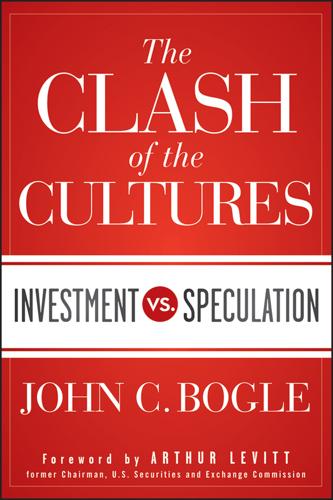
The Clash of the Cultures
by
John C. Bogle
Published 30 Jun 2012
Chapter 8: The Rise, the Fall, and the Renaissance of Wellington Fund Introduction Part I Part II Part III Part IV Chapter 9: Ten Simple Rules for Investors and a Warning for Speculators Summing Up Buy Broad Market Index Funds Wellington Fund and the Index Fund Reversion to the Mean (RTM) is a Virtual Certainty Ten Simple Rules for Investment Success Appendix I: Performance Ranking of Major Mutual Fund Managers–March 2012 Appendix II: Annual Performance of Common Stock Funds versus S&P 500, 1945–1975 Appendix III: Growth in Index Funds—Number and Assets, 1976–2012 Appendix IV: Wellington Fund Record, 1929–2012 Appendix V: Wellington Fund Equity Ratio and Risk Exposure (Beta), 1929–2012 Appendix VI: Wellington Fund Performance versus Average Balanced Fund, 1929–2012 Appendix VII: Wellington Fund Expense Ratios, 1966–2011 Index BOOKS BY JOHN C. BOGLE 1994 Bogle on Mutual Funds: New Perspectives for the Intelligent Investor —Foreword by Paul A. Samuelson 1999 Common Sense on Mutual Funds: New Imperatives for the Intelligent Investor —Foreword by Peter L. Bernstein 2001 John Bogle on Investing: The First 50 Years —Foreword by Paul A. Volcker, Introduction by Chancellor William T. Allen 2002 Character Counts: The Creation and Building of The Vanguard Group 2005 The Battle for the Soul of Capitalism —Foreword by Peter G.
…
True Measures of Money, Business, and Life —Foreword by William Jefferson Clinton, Prologue by Tom Peters 2010 Common Sense on Mutual Funds: Fully Updated 10th Anniversary Edition —Foreword by David F. Swensen 2011 Don’t Count on It! Reflections on Investment Illusions, Capitalism, “Mutual” Funds, Indexing, Entrepreneurship, Idealism, and Heroes —Foreword by Alan S. Blinder 2012 The Clash of the Cultures: Investment vs. Speculation —Foreword by Arthur Levitt Copyright © 2012 by John C. Bogle. All rights reserved. Published by John Wiley & Sons, Inc., Hoboken, New Jersey. Published simultaneously in Canada. No part of this publication may be reproduced, stored in a retrieval system, or transmitted in any form or by any means, electronic, mechanical, photocopying, recording, scanning, or otherwise, except as permitted under Section 107 or 108 of the 1976 United States Copyright Act, without either the prior written permission of the Publisher, or authorization through payment of the appropriate per-copy fee to the Copyright Clearance Center, Inc., 222 Rosewood Drive, Danvers, MA 01923, (978) 750-8400, fax (978) 646-8600, or on the Web at www.copyright.com.
…
To that criticism, I can only respond that I have been as objective as is humanly possible. The data are the data! More broadly, I hardly need apologize for the investment strategies and human values on which I founded Vanguard, for these strategies and values have met the test of time. Please enjoy the book and let me know what you think. Read my blog at www.johncbogle.com. John C. Bogle Valley Forge, Pennsylvania June, 2012 About This Book In 1951, when I began my career, long-term investing was the mantra of the investment community. In 1974, when I founded Vanguard, that tenet still remained intact. But over the past several decades, the very nature of our nation’s financial sector has changed—and not for the better.

In Pursuit of the Perfect Portfolio: The Stories, Voices, and Key Insights of the Pioneers Who Shaped the Way We Invest
by
Andrew W. Lo
and
Stephen R. Foerster
Published 16 Aug 2021
New York: Free Press. ________. 2007. Capital Ideas Evolving. Hoboken, NJ: Wiley. Bernstein, William J. 2004. The Birth of Plenty: How the Prosperity of the Modern World Was Created. New York: McGraw-Hill. Best, Richard. 2016. “Where Does John C. Bogle Keep His Money?” Investopedia, January 27, https://www.investopedia.com/articles/financial-advisors/012716/where-does-john-c-bogle-keep-his-money.asp. “Big Money in Boston.” 1949. Fortune, December, 116–21, 189–90, 194, 196. Black, Fischer. 1989a. “How We Came Up with the Option Formula.” Journal of Portfolio Management 15, no. 2: 4–8. ________. 1989b. “Universal Hedging: Optimizing Currency Risk and Reward in International Equity Portfolios.”
…
The higher expected returns on stocks comes about with a large amount of risk.”89 So, the bottom line for Fama’s Perfect Portfolio begins with a fund that tracks a broad market such as the S&P 500 index and then, if you decide to do so, tilts away a bit toward a style you prefer, such as value or small cap, while recognizing that higher expected returns only come with additional risk. 5 John Bogle and the Vanguard Portfolio INVESTING IN LOW-COST index funds is common these days, an approach advocated by William Sharpe, Eugene Fama, and many of our other luminaries. In fact, trillions of dollars are invested in U.S. index funds alone. Yet it all started with a pioneer—John C. Bogle, or Jack, as he preferred—who in late 1975 started the world’s first index mutual fund, the First Index Investment Trust, which started with $11 million in assets.
…
University of Chicago Booth School of Business, http://www.crsp.org/files/SpringMagazine_IndexFund.pdf. Anson, Mark, Edward Baker, John Bogle, Ronald Kahn, and Meir Statman. 2006. “Putting the Shareholder First: A Lifetime Ideal; A Conversation with John Bogle.” Journal of Investment Consulting 8, no. 1: 8–22. Anson, Mark, Edward Baker, Martin Leibowitz, Margaret Towle, and Meir Statman. 2011. “Creating Solutions from a Lifetime of Learning Experiences: Talking Investments with Martin L. Leibowitz, PhD.” Journal of Investment Consulting 12, no. 2: 6–15. Armstrong, John [John Bogle]. 1960. “The Case for Mutual Fund Management.” Financial Analysts Journal 16, no. 3: 33–38.

The Bogleheads' Guide to Investing
by
Taylor Larimore
,
Michael Leboeuf
and
Mel Lindauer
Published 1 Jan 2006
"From beginning investors to those in retirement, The Bogleheads' Guide To Investing is packed with simple and sophisticated investment advice, offering an abundance of resources for a winning investment strategy. It is written with wit, clarity, and wisdom, and is sure to become a treasured resource for long-term investors." -Bill Schultheis, Author, The Coffeehouse Investor Bogleheads' Guide to Investing Contents ACKNOWLEDGMENTS XI FOREWORD BY JOHN C. BOGLE XIII INTRODUCTION XXI PART I ESSENTIALS OF SUCCESSFUL INVESTING CHAPTER 1 CHOOSE A SOUND FINANCIAL LIFESTYLE 3 CHAPTER 2 START EARLY AND INVEST REGULARLY 13 CHAPTER 3 KNOW WHAT YOU'RE BUYING: PART ONE 25 CHAPTER 4 KNOW WHAT YOU'RE BUYING: PART TWO 39 CHAPTER 5 PRESERVE YOUR BUYING POWER WITH INFLATION-PROTECTED BONDS 49 CHAPTER 6 HOW MUCH Do YOU NEED TO SAVE?
…
If, in the history I have recounted today, I have allowed my own pride to peep out and show itself, I assure you that it is with great humility that I accept the honor that this association of Bogleheads have paid to this particular Bogle by their choice of name, by their enthusiastic endorsement of my principles and values, and by their dedication in this wonderful book. Take heed of its guidance, and you will enjoy investment success. John C. Bogle Valley Forge, Pennsylvania September 1, 2005 Introduction Do not value money for any more nor any less than its worth; it is a good servant but a bad master. -Alexander Dumas fits, Camille, 1852 Contrary to what you may believe, a Boglehead is not one of those funny little dolls you occasionally see bouncing in the back window of a car in front of you.
…
In investing, if you spend lots of time and effort studying the market, or pay someone to manage your investments, you have less than a 20 percent chance of being an A investor. However, if you know nothing about investing, spend minimal time on your investments, and buy index funds, you have a 100 percent chance of being a B investor. In a world where most investors get a D or worse, B is beautiful. John C. Bogle, founder and former chairman, The Vanguard Group: "If you go back to 1970, there were only 355 equity funds. Only 169 of them survive today, so right away you are dramatically skewing the numbers by not counting the losers. Of those 169 survivors, only nine beat the S&P 500 through 1999. Three by 1 percent to 2 percent per year, four by 2 percent to 3 percent, and only two by more than that.
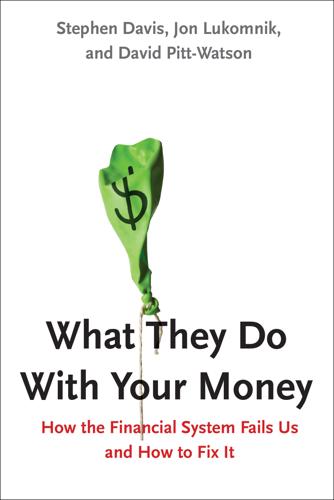
What They Do With Your Money: How the Financial System Fails Us, and How to Fix It
by
Stephen Davis
,
Jon Lukomnik
and
David Pitt-Watson
Published 30 Apr 2016
Research has found that some mutual funds, apparently unchecked by their boards, often place “important business interests … in asset gathering ahead of their fiduciary duties” to savers.12 Some fund companies make investment decisions designed to help gain and retain corporate clients, even at a substantial financial penalty to the savers whose interests they are there to serve.13 Vanguard founder John C. Bogle has calculated the titanic costs to investors when investment funds with permissive boards tolerate excessive buying and selling of securities with attendant fees and sales loads.14 Over twenty-five years ending in 2005, he suggests, fund companies reaped $500 billion in fees from overly complex products, while delivering returns to clients less than one third of the figure investors would have made had they put savings into a simple low-cost alternative.
…
Statutes designed to safeguard retirement savings were written long before the advent of today’s complex market, where intermediaries with many functions touch on the value of savers’ assets. Yet these middlemen normally do not fall under fiduciary duty standards and have no obligation to act in beneficiaries’ ultimate interests. Vanguard founder John C. Bogle has long called for a fiduciary duty “establishing the basic principle that money managers are there to serve … those whose money they manage.”22 In Britain, the Kay Review urged extension of fiduciary duty to intermediaries. Prompted by the Obama White House, the US Department of Labor proposed extending aspects of fiduciary duty to financial advisors and brokers.
…
Jennifer Taub, “Able but Not Willing: The Failure of Mutual Fund Advisors to Advocate for Shareholders’ Rights,” SSRN (March 31, 2009), http://papers.ssrn.com/sol3/papers.cfm?abstract_id=1066831##. 13. Lauren Cohen and Breno Schmidt, “Attracting Flows by Attracting Big Clients: Conflicts of Interest and Mutual Fund Portfolio Choice” (2007), http://www.chicagobooth.edu/research/workshops/finance/docs/cohen_attractingflows.pdf. 14. John C. Bogle, Enough: True Measures of Money, Business, and Life (John Wiley and Sons, 2009), 82. 15. The Aspen Institute Business and Society Program, Overcoming Short-Termism: A Call for a More Responsible Approach to Investment and Business Management (September 9, 2009), www.aspeninstitute.org/sites/default/files/content/docs/bsp/overcome_short_state0909.pdf. 16.

Makers and Takers: The Rise of Finance and the Fall of American Business
by
Rana Foroohar
Published 16 May 2016
Foroohar, “2030: The Year Retirement Ends,” Time, June 19, 2014. 5. John C. Bogle, The Clash of the Cultures: Investment vs. Speculation (Hoboken, NJ: Wiley, 2012). 6. Ibid., 215. 7. State Budget Crisis Task Force, “Final Report,” January 2014, 16. 8. Investment Company Institute, 2015 Investment Company Fact Book (Washington DC, 2015), 137. 9. William Sharpe, “The Arithmetic of Investment Expenses,” Financial Analysts Journal 69, no. 2 (March/April 2013): 34–41. 10. John C. Bogle, founder of the Vanguard Group, testimony before the Finance Committee of the United States Senate (written statement), September 16, 2014. 11. John C. Bogle, “Big Money in Boston: The Commercialization of the Mutual Fund Industry,” Journal of Portfolio Management 40, no. 4 (2013): 135. 12.
…
Author interviews with Schultz, 2015; Rana Foroohar, “Starbucks for America,” Time, February 5, 2015. 35. Author interview with Palmisano for this book, 2014. 36. Andrew Ross Sorkin, “The Truth Hidden by IBM’s Buybacks,” New York Times, October 20, 2014. 37. Author interview with Smithers for this book. 38. John C. Bogle, “Wall St’s Illusion on Historical Performance,” Financial Times, March 30, 2011. 39. According to the State Budget Crisis Task Force, cochaired by former Fed chairman Paul Volcker, about 25 percent of the actuarial liabilities of the country’s major state and local pension plans are unfunded—meaning that the plans won’t be able to meet one-quarter of their obligations to pensioners based on current market returns.
…
Bogle, “Big Money in Boston: The Commercialization of the Mutual Fund Industry,” Journal of Portfolio Management 40, no. 4 (2013): 135. 12. Knut A. Rostad, ed., The Man in the Arena: Vanguard Founder John C. Bogle and His Lifelong Battle to Serve Investors First (Hoboken, NJ: Wiley, 2013), 124–25. 13. Bogle, The Clash of the Cultures, 111. 14. Ian Ayres and Quinn Curtis, “Beyond Diversification: The Pervasive Problem of Excessive Fees and ‘Dominated Funds’ in 401(k) Plans,” Yale Law Journal 124, no. 5 (March 2015): 1501. 15. Bogle, “Big Money in Boston,” 142. 16. Author interview with John Shaw Sedgwick, the son of R.

The Four Pillars of Investing: Lessons for Building a Winning Portfolio
by
William J. Bernstein
Published 26 Apr 2002
A well-known rule among scientists is that each successive mathematical formula cuts a book’s popular readership in half; I’ve done my best to keep the math simple and the graphs as spare as possible. Now, almost a decade later, this title is in its seventeenth printing; so I suppose I’ve succeeded. Special thanks go to those who have provided encouragement and help along the way, including Cliff Asness, John C. Bogle Sr., Scott Burns, Edward Chancellor, Mark Gochnour, Christian Oelke, John Rekenthaler, Bill Schultheis, Larry Swedroe, Robert Sidelsky, Richard Thaler, Mike Veseth, and Jason Zweig. I’ll never understand what motivated Catherine Dassopoulos and Jeffrey Krames of McGraw-Hill to take an interest in an obscure electronic file by an unknown scribbler floating around in cyberspace, but their editorial and publishing support has been a constant source of delight and satisfaction.
…
Within almost any asset class you care to name, and compared to almost any other fund company, Vanguard offers the lowest fees, often by a country mile. Why? Having told the stories of Charlie Merrill and Ned Johnson’s Fidelity, the time has now come for the most remarkable saga of all—that of Jack Bogle and the Vanguard Group. For it was Mr. Bogle who finally realized Merrill’s dream of bringing Wall Street to Main Street. John C. Bogle did not exactly tear up the track in his early years at Princeton. He had a particularly shaky freshman start, but by his senior year had begun to impress his professors with his grasp of the investment industry. The choice for his senior thesis could not have been more fortuitous—“The Economic Role of the Investment Company.”
…
Stating that there was a “tripling of the dividend multiple” is just another way of saying that an enthusiastic investing public has driven up stock prices relative to earnings and dividends by a factor of three. Over relatively short periods of time—less than a few decades—this change in the dividend or PE multiple accounts for most of the stock market’s return, and over periods of less than a few years, almost 100% of it. John Bogle, founder of the Vanguard Group of mutual funds, provides us with a very useful way of thinking about this. He calls the short-term fluctuations in stock prices due to changes in dividend and PE multiples the “speculative return” of stocks. On the other hand, the long-term increase in stock market value is entirely the result of the sum of long-term dividend growth and dividend yield calculated from the Gordon Equation, what Bogle calls the “fundamental return” of stocks.
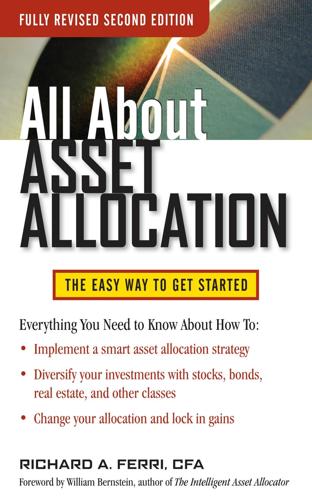
All About Asset Allocation, Second Edition
by
Richard Ferri
Published 11 Jul 2010
This led a few prominent icons in the investment industry to question the wisdom of owning international stocks. One of those was John Bogle, founder of the Vanguard Group of mutual funds. I have the greatest respect for John Bogle, but I don’t always agree with him, and this was one of those times. A single 10-year period is not a reason to be out of international stocks for a lifetime. By the end of 2009, after international stocks outperformed U.S. stocks by a wide margin, people saw the benefits of international exposure. Even John Bogle changed his view and now accepts an allocation of up to 20 percent in international stock index funds.
…
Learn the principles of asset allocation, design an investment plan that fits your needs, implement and maintain that plan, and keep your costs low. You will be further ahead in the future for doing so. This page intentionally left blank APPENDIX A Research Web Sites Bogleheads.org Bogleheads was inspired by the writings and actions of John C. Bogle, founder and former chairman of the Vanguard Group. This unbiased online community of investors will help answer the questions you have about asset allocation and investment selection. DFAfunds.com Dimensional Fund Advisors offers unique index funds through advisors. Its three-factor approach to portfolio construction is gaining acceptance worldwide.
…
This book provides sound advice on a variety of issues including mutual funds, bonds, diversification, and taxes. Published in 2006 by Wiley. The Coffeehouse Investor, by Bill Schultheis. An asset allocation book for those who want to keep their life simple. 2nd edition, published in 2009 by Portfolio Hardcover. Common Sense on Mutual Funds, by John C. Bogle. A low-cost mutual fund icon shares his views on investing. 2nd edition, published in 2009 by Wiley. The ETF Book, by Richard A. Ferri, CFA: All you need to know about exchangetraded products. 2nd edition, published in 2009 by Wiley. The Four Pillars of Investing: Lessons for Building a Winning Portfolio, by William J.

The Einstein of Money: The Life and Timeless Financial Wisdom of Benjamin Graham
by
Joe Carlen
Published 14 Apr 2012
in The Rediscovered Benjamin Graham, edited by Janet Lowe (New York: John Wiley & Sons, 1999), p. 9. CHAPTER 8. THE FOLLY OF “MR. MARKET” 1. Benjamin Graham, The Intelligent Investor, 4th ed. (New York: Harper & Row, 1973), p. 108. 2. Ibid. 3. Kelly Evans, “Ahead of the Tape,” Wall Street Journal, April 2, 2010. 4. Graham, Intelligent Investor, 4th ed., p. 108. 5. John C. Bogle, Common Sense on Mutual Funds (Hoboken, NJ: John Wiley & Sons, 2009), p. 28. 6. Pat Dorsey, The Five Rules for Successful Stock Investing (Hoboken, NJ: John Wiley & Sons, 2004), p. xvii. 7. Gary P. Brinson, Randolph L. Hood, and Gilbert P. Beebower, “Determinants of Portfolio Performance,” Financial Analysts Journal (July/August 1986). 8.
…
storyID=22536&template=article&bhcp=1 (accessed April 9, 2012). 67. Greenwald et al., Value Investing, p. 197. 68. GAMCO Investors, Inc., 2005 Annual Report. 69. “Who We Are,” Vanguard, https://personal.vanguard.com/us/content/Home/WhyVanguard/AboutVanguardWhoWeAreContent.jsp (accessed April 25, 2012). 70. John C. Bogle, Bogle on Mutual Funds: New Perspectives for the Intelligent Investor (New York: Dell, 1994), p. v. 71. John Birger, “Eveillard: A Value Maestro's Encore,” Fortune, June 19, 2007. 72. Ibid. 73. “Jean-Marie Eveillard: Profile/Performance,” Guru Focus, February 11, 2012, http://www.gurufocus.com/StockBuy.php?
…
Nonetheless, Gabelli remains a dedicated Graham devotee and Greenwald and his colleagues describe him as a “value investor…schooled in the Benjamin Graham tradition.”67 In fact, Gabelli presents an annual “Graham & Dodd, Murray, Greenwald Award for Distinguished Value Investors.”68 JOHN BOGLE The celebrated founder of the Vanguard Group (which manages over $1.7 trillion in assets69), John Bogle, now retired, scaled the heights of investment finance for several decades. He is also a proud Graham devotee throughout most of his career. In the acknowledgments to his classic work Bogle on Mutual Funds: New Perspectives for the Intelligent Investor, Bogle wrote: “Two centuries ago, it was said that if we stand on the shoulders of giants, we may see further than the giants themselves.
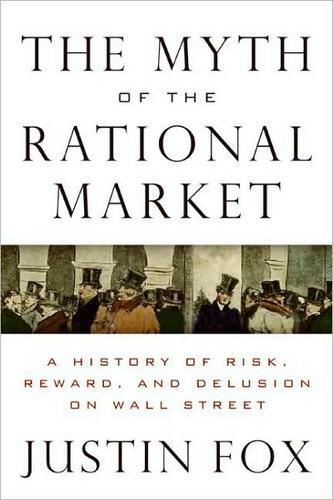
The Myth of the Rational Market: A History of Risk, Reward, and Delusion on Wall Street
by
Justin Fox
Published 29 May 2009
“Big Money in Boston,” Fortune, Dec. 1949, 116–21, 189–96. There’s no byline, but Fortune’s records show that it was written by Hedley Donovan, who went on to succeed Henry Luce as editor of Time Inc. The second quote was a paraphrase by Donovan of a statement by an MIT executive. 8. John C. Bogle, “The Economic Role of the Investment Company,” reprinted in John Bogle on Investing: The First 50 Years (New York: McGraw-Hill, 2001), 355, 440. 9. The Collected Writings of John Maynard Keynes: Vol. XII, Donald Maggridge, ed. (Cambridge: Cambridge University Press, 1983), 100, 82. 10. Benjamin Graham, The Memoirs of the Dean of Wall Street, edited and introduction by Seymour Chatman (New York: McGraw-Hill, 1996), 124–26.
…
A few months later, though, a rebuttal of their article appeared in the pages of the Financial Analysts Journal. Its author was “John B. Armstrong”—a pseudonym, a footnote revealed, for “a man who has spent many years in the security field and wrote his Princeton senior thesis on ‘The Economic Role of the Investment Company.’” His real name was John C. Bogle, and he was a rising young executive at Wellington Management Co., a Philadelphia mutual fund firm. He’d opted for the pseudonym (Armstrong was his maternal grandfather’s last name) because he didn’t want to get Wellington in trouble with the Securities and Exchange Commission.3 In his rebuttal, Bogle argued that the unmanaged fund was a solution in search of a problem.
…
Joseph Nocera, A Piece of the Action: How the Middle Class Joined the Money Class (New York: Simon & Schuster, 1994), 116–18. Merrill switched to paying its brokers with commissions in the early 1970s. 31. Investment Company Institute v. Camp, 401 U.S. 617 (1971). 32. A much more extensive account of this can be found in Peter Bernstein, Capital Ideas (New York: Free Press, 1993). 33. John C. Bogle, “Remutualizing the Mutual Fund Industry—The Alpha and the Omega,” address at Boston College Law School, Jan. 21, 2004. 34. From an advertisement for the book that ran in New York Times on Oct. 14, 1973, 173. 35. Vartanig Vartan, “Research vs. Rhesus,” New York Times, Oct. 14, 1973, 181. 36.
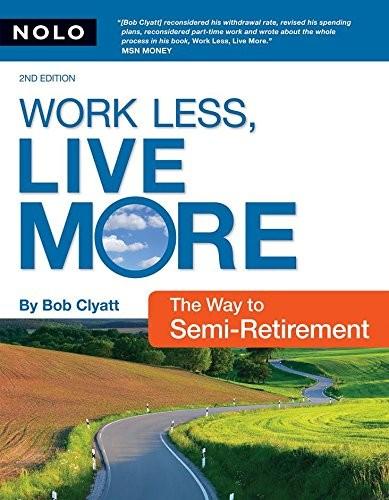
Work Less, Live More: The Way to Semi-Retirement
by
Robert Clyatt
Published 28 Sep 2007
For example, PFUIX and PCRIX list a $5 million minimum in their literature but are available through fund supermarkets with a chapter 3 | Put Your Investing on Autopilot | 197 $25,000 minimum and $1,000 follow-on investments. The lesson here is that you may need to knock more than once to get into some of these funds. Resource The defining source of information on long-term buy-and-hold low-fee indexing has been Vanguard’s founder, John C. Bogle, author of the classic Common Sense on Mutual Funds (Wiley). Bogle also has a website loaded with numerous speeches and articles at www.vanguard.com/bogle_ site/bogle_home.html. Richard Ferri recently wrote a clear, well-researched book on asset allocation, All About Asset Allocation (McGraw Hill), which digs deeper into the research and data underlying Rational Investing principles.
…
Appendix B | Resources | 347 Print Armstrong. The Informed Investor, by Frank Armstrong III (Amoco), a financial planner, gives a very readable discussion of the benefits of diversifying among key asset classes with Small, International, and Value Tilts. Bogle. Common Sense on Mutual Funds, by John C. Bogle (John Wiley and Sons). This book and anything written by Bogle are the gold standard for advice on cost-efficient indexing and long-term investing. As founder of the investment firm Vanguard, Bogle has arguably done more for the small investor than anyone in history and continues to rail against excessive fees and conflict of interest in the mutual fund industry.
…
In all cases, your actual fees will be higher than those listed in fund prospectuses and published materials, since all funds incur trading expenses and commissions while buying and selling securities that are never clearly reported. The .5% figure for your budget attempts to capture those trading expenses and give you a clear and accurate picture of your costs. As a reference point, John Bogle, the founder of The Vanguard Group, a low-fee mutual fund firm owned by its shareholders, estimates that the fund management industry as a whole absorbs about 3% of asset values each year in investment management fees and commission. You will be far ahead of that average, keeping more of your money at work and growing in value for you every year.
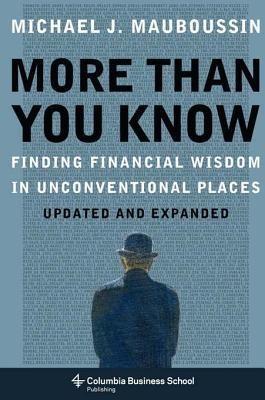
More Than You Know: Finding Financial Wisdom in Unconventional Places (Updated and Expanded)
by
Michael J. Mauboussin
Published 1 Jan 2006
Bogle argues that the turnover ratios suggest most investors are speculators. See John C. Bogle, “Mutual Fund Industry in 2003: Back to the Future,” 14 January 2003, http://www.vanguard.com/bogle_site/sp20030114.html. 4 See Charles D. Ellis, “Will Business Success Spoil the Investment Management Profession?” The Journal of Portfolio Management (Spring 2001): 11-15, for an excellent exposition of this tension. 5 Bogle, “Mutual Fund Industry in 2003.” Also see, “Other People’s Money: A Survey of Asset Management,” The Economist, July 5, 2003; John C. Bogle, “The Emperor’s New Mutual Funds,” The Wall Street Journal, July 8, 2003; and John C. Bogle, “The Mutual Fund Industry Sixty Years Later: For Better or Worse?”
…
Campbell, Martin Lettau, Burton Malkiel, and Yexiao Xu, “Have Individual Stocks Become More Volatile? An Empirical Exploration of Idiosyncratic Risk,” Journal of Finance 54 (February 2001): 1-43. 5 This does not mean that stock prices reflect short-term expectations. 6 John C. Bogle, “Mutual Fund Directors: The Dog that Didn’t Bark,” January, 28, 2001, http://www.vanguard.com/bogle_site/sp20010128.html. Updated data are from John C. Bogle, “The Mutual Fund Industry Sixty Years Later: For Better or Worse?” Financial Analysts Journal (January-February 2005). 7 Kathryn Kranhold, “Florida Might Sue Alliance Capital Over Pension Fund’s Enron Losses,” The Wall Street Journal, April 23, 2002. 8 This is not to say that the stock market is short-term oriented.
…
Brian Arthur, “Inductive Reasoning and Bounded Rationality: The El Farol Problem,” paper given at the American Economic Association Annual Meetings, 1994, published in American Economic Review (Papers and Proceedings) 84 (1994): 406-11, http://www.santafe.edu/arthur/Papers/El_Farol.html. 2 For a good discussion of expectation formation, see Karl-Erik Wärneryd, Stock-Market Psychology (Cheltenham, UK: Edward Elgar, 2001), 73-95. 3 See Bob Davis and Susan Warren, “How Fears of Impending War Already Take Economic Toll,” The Wall Street Journal, January 29, 2003. 4 John Maynard Keynes, The General Theory of Employment (New York: Harcourt, Brace and Company, 1936), 162. 5 Ibid., 159. 6 John C. Bogle, “The Mutual Fund Industry in 2003: Back to the Future,” remarks before the Harvard Club of Boston, January 14, 2003, http://www.vanguard.com/bogle_site/sp20030114.html. 7 This section relies heavily on Arthur, “Inductive Reasoning.” 8 Corinne Coen and Rick Riolo, “El Farol Revisited: How People in Large Groups Learn to Coordinate Through Complementary Scripts,” Organizational Learning and Knowledge Management conference proceedings, 4th International Conference, June 2001. 9 Max Bazerman, Judgment in Managerial Decision Making, 4th ed.

How I Invest My Money: Finance Experts Reveal How They Save, Spend, and Invest
by
Brian Portnoy
and
Joshua Brown
Published 17 Nov 2020
Crain’s Chicago Business named her a Notable Woman in Finance in 2019. Benz is author of 30-Minute Money Solutions: A Step-by-Step Guide to Managing Your Finances; co-author of Morningstar Guide to Mutual Funds: 5-Star Strategies for Success, a national bestseller; and author of the book’s second edition. She is a board member of the John C. Bogle Center for Financial Literacy. Benz is also a member of The Alpha Group, a group of thought leaders from the wealth management industry. She works with underprivileged women to improve their understanding of personal finance concepts. I’ll never be passionate about investments. That’s not a comfortable admission, given that I’ve spent my career in a job where investments are central, and I work amid people who are deeply, truly, genuinely into investments.
…
His son’s firm manages about $1.1 billion and its small-cap mutual fund charges annual fees of 1.35%, much higher than the 0.24% annual fee for a Vanguard index fund that tracks similar stocks, but about average for active managers offering similar services. John Bogle has a ready reply: He is making money for clients and for himself. “Is there anything wrong with that?” he said once in response. This year, John Bogle’s fund has generated total returns of 40%... according to Morningstar, compared with 35% for the Russell 2000 and 34% for the similar Vanguard fund, according to Morningstar. Even his father benefits. He is an investor in the small-cap fund.
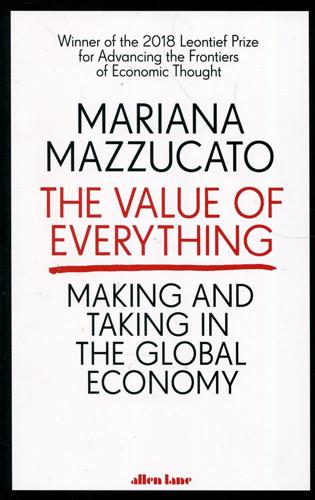
Value of Everything: An Antidote to Chaos The
by
Mariana Mazzucato
Published 25 Apr 2018
Philippon, ‘Finance vs Wal-Mart: Why are financial services so expensive?', in A. Blinder, A. Lo and R. Solow (eds), Rethinking the Financial Crisis (New York: Russell Sage Foundation, 2012), p. 13: http://www.russellsage.org/sites/all/files/Rethinking-Finance/Philippon_v3.pdf 38. John C. Bogle, ‘The arithmetic of “all-in” investment expenses', Financial Analysts Journal, 70(1) (2014), p. 18. 39. Ibid., p. 17. 40. John C. Bogle, The Clash of the Cultures: Investment vs. Speculation (Hoboken, NJ: John Wiley and Sons, 2012), p. 8. 41. Ibid., p. 2. 42. https://www.ft.com/content/ab1ce98e-c5da-11e6-9043-7e34c07b46ef 43. https://www.nytimes.com/2016/12/10/business/dealbook/just-how-much-do-the-top-private-equity-earners-make.html 44.
…
A passive fund is usually an ‘index' or ‘tracker' fund, where the manager simply buys shares in proportion to a stock market index and tracks that benchmark. But performance must be balanced with fees. Consider investing longterm, say over the forty-year working life of a given employee. One of the leading figures in the US fund management industry is John Bogle. He founded Vanguard, a very large index investment group (not an active investor) which charges low fees. Bogle has estimated an all-in cost for actively managed funds of 2.27 per cent of the funds' value. The amounts may not seem excessive. But Bogle never tires of saying to fund investors: ‘Do not allow the tyranny of compounding costs to overwhelm the magic of compounding returns.'38 In fact, if you assume Bogle's estimate of fund management costs and also assume an annual return of 7 per cent, the total return to a saver over forty years will be 65 per cent higher without the charges.
…
And the average holding time for equity investment, whether by individuals or institutions, has relentlessly fallen: from four years in 1945 to eight months in 2000, two months in 2008 and (with the rise of high-frequency trading) twenty-two seconds by 2011 in the US.20 Average PE holding times jumped to almost six years when stock markets froze in the wake of the 2008 global financial crash, but were on a firm downward course again by 2015.21 The ‘short-termism' which Keynes anticipated is encapsulated in index fund pioneer John Bogle's concept that institutional investors rent the shares of the companies they invest in rather than take ownership for the long term. Consider the increased turnover of domestic shares: according to the World Federation of Exchanges, which represents the world's publicly regulated stock exchanges, in the US turnover of domestic shares was around 20 per cent a year in the 1970s, rising steeply to consistently over 100 per cent a year in the 2000s.
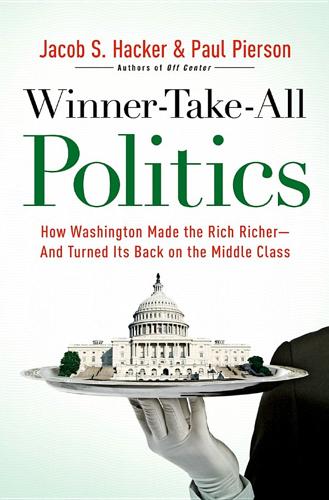
Winner-Take-All Politics: How Washington Made the Rich Richer-And Turned Its Back on the Middle Class
by
Paul Pierson
and
Jacob S. Hacker
Published 14 Sep 2010
Murphy, “Politics, Economics, and Executive Compensation,” University of Cincinnati Law Review 63 (1995): 714–746. 45 Peter A. Gourevitch and James Shinn, Political Power and Corporate Control: The New Global Politics of Corporate Governance (Princeton: Princeton University Press, 2005). 46 John C. Bogle, “A Crisis of Ethic Proportions,” Wall Street Journal, April 21, 2009; John C. Bogle, The Battle for the Soul of Capitalism: How the Financial System Undermined Social Ideals, Damaged Trust in the Markets, Robbed Investors of Trillions—And What to Do About It (New Haven: Yale University Press, 2005). 47 Lucian Bebchuk and Jesse Fried, Pay Without Performance: The Unfulfilled Promise of Executive Compensation (Cambridge, MA: Harvard University Press, 2004). 48 Ibid., 100. 49 Ibid., 102, 105. 50 Ellen E.
…
Many of those who study how this process actually works are more doubtful. Looking at corporate governance in a number of rich democracies, the political economists Peter Gourevitch and James Shinn argue that a better description is “managerism,” a system in which managerial elites are in a strong position to extract resources.45 The financier John Bogle has contended that instead of an “ownership society” in which managers serve owners, the United States is moving toward an “agency society” in which managers serve themselves.46 Two of the nation’s leading experts on corporate compensation, Lucian Bebchuk and Jesse Fried, provide many findings more consistent with a “board capture” view than a “shareholder value” perspective.
…
As we write midway through the fourth year of Democratic control of Congress, the rules governing taxation of hedge funds look more vulnerable than ever but remain unchanged. Schumer’s policy role, combined with his success in fund-raising, has garnered scathing criticism from many close observers of Wall Street practices. John Bogle, founder of the Vanguard Group and a passionate advocate for ordinary shareholders, bluntly concludes that Schumer “is serving the parochial interest of a very small group of financial people, bankers, investment bankers, fund managers, private equity firms, rather than serving the general public… It has hurt the American investor first and the average American taxpayer.”10 Yet one could also say Schumer has simply followed a time-honored American practice.
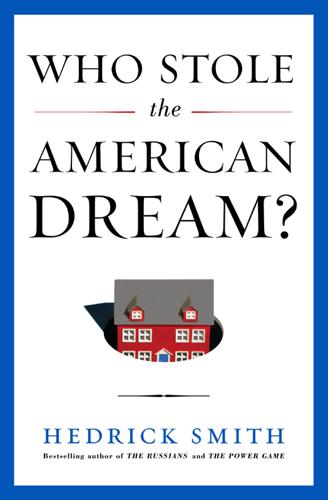
Who Stole the American Dream?
by
Hedrick Smith
Published 10 Sep 2012
CHAPTER 14 THE GREAT WEALTH SHIFT HOW THE BANKS ERODED MIDDLE-CLASS SAVINGS The American people realize they’ve been robbed. They’re just not sure by whom. —GRETCHEN MORGENSON AND JOSHUA ROSNER, Reckless Endangerment Our present economic crisis was, by and large, foisted on Main Street by Wall Street—the mostly innocent public taken to the cleaners, as it were, by the mostly greedy financiers. —JOHN C. BOGLE, founder, the Vanguard Group HOUSING EPITOMIZES DIVIDED AMERICA. It lies astride the fault line of the economic earthquake that split the country. The housing bubble and bust did more to devastate middle-class wealth in a relatively short span than any other single development. In the 1990s and 2000s, the secondary market in housing mortgages gave birth to probably the most massive operation for creating, packaging, and selling debt in American history.
…
Olin Center for Law, Economics, and Business, Harvard University, February 2010). 64 Angelo Mozilo, CEO Frank Ahrens, “Big Payday Awaits Chairman After Countrywide Sale,” The Washington Post, January 12, 2008. 65 The SEC found Eric Dash, “Dodging Taxes Is a New Stock Options Scheme,” The New York Times, October 30, 2006; “Stock-Options Scandal Fugitive Puts Roots Down in Namibia,” The Wall Street Journal, November 17, 2006; “How Backdating Helped Executives Cut Their Taxes,” The Wall Street Journal, December 12, 2006. 66 Steve Jobs had been personally involved “Jobs Helped Pick ‘Favorable’ Dates for Options Grants,” The Wall Street Journal, December 30, 2006; and Alan Sipress, “Apple Chief Benefited from Options, Records Indicate,” The Washington Post, January 11, 2007. 67 One revealing case, William McGuire “Embattled CEO to Step Down at United Health,” The Wall Street Journal, October 16, 2006; “How a Giant Insurer Decided to Oust Hugely Successful CEO,” The Wall Street Journal, December 7, 2007. 68 One reason so many CEOs got away Lucian Bebchuk, Yaniv Grinstein, and Urs Peyer, “Lucky CEOs and Lucky Directors,” Discussion Paper No. 573 (Cambridge, MA: John M. Olin Center for Law, Economics, and Business, Harvard University, December 2006), published in Journal of Finance 65, no. 6 (December 2010); John Hechinger, “Backdated Options Pad CEO Pay by Average of 10%,” The Wall Street Journal, November 17, 2006. 69 Bogle also derided the idea John C. Bogle, The Battle for the Soul of Capitalism (New Haven, CT: Yale University Press, 2005), 10–26. 70 Dissenting academics Jay Lorsch and Rakesh Khurana, “The Pay Problem,” Harvard Magazine, May–June 2010. 71 Executive stock options Despite his dismay, Jensen was against abandoning the pay-for-performance stock options.
…
Department of Justice, news release, December 17, 2007, Exhibit 82, Levin subcommittee, hearing April 13, 2010, www.hsgac.senate.gov/public/_files/Financial_Crisis/041310Exhibits.pdf. 35 55 percent of subprime borrowers “Subprime Debacle Traps Even Very Credit-Worthy,” The Wall Street Journal, December 3, 2007; “Policing Main Street,” Newsweek, July 25, 2010. 36 The floating-rate mortgage Heller, interview, August 4, 2010. 37 Terboss spent $200,000 John Terboss, interview, September 2, 2010. 38 Terboss shared with me Homegate Mortgage Company, fax letter, “Proposal for John Terboss, Prepared by Bob Norrris, 10/03/07,” provided by Terboss. 39 “It was a very strange closing” Terboss, interview, September 2, 2010. 40 “I immediately called the bank” Ibid. 41 “This is not how it was represented” John Terboss, fax letter to Washington Mutual, December 11, 2007. 42 “It’s as if the broker” David Leen, interview, August 30, 2010. 43 “I learned that the banking industry” Terboss, interview, September 17, 2010. CHAPTER 14: THE GREAT WEALTH SHIFT 1 “The American people” Morgenson and Rosner, Reckless Endangerment, xiv. 2 “Our present economic crisis” John C. Bogle, testimony, House Committee on Education and Labor, February 24, 2009. 3 It powered the growth of debt Frank J. Fabozzi, Anand K. Bhattacharya, and William S. Berliner, Mortgage-Backed Securities (Hoboken, NJ: John Wiley & Sons, 2007), preface. 4 Greenspan dismissed the risk Alan Greenspan, remarks, annual convention of Independent Community Bankers of America, Orlando, FL, March 4, 2003. 5 “Greatest global financial crisis ever” Alan Greenspan, citing Federal Reserve data, in “Activism,” International Finance 14, no. 1 (Spring 2011), http://www.cfr.org. 6 “I found a flaw in the model” Alan Greenspan, testimony, House Committee on Oversight and Government Reform, October 23, 2008. 7 Greenspan went on to admit that the crash Greenspan, citing Federal Reserve data, in “Activism.” 8 “A shift in the mortgage product” James Grant, Mr.
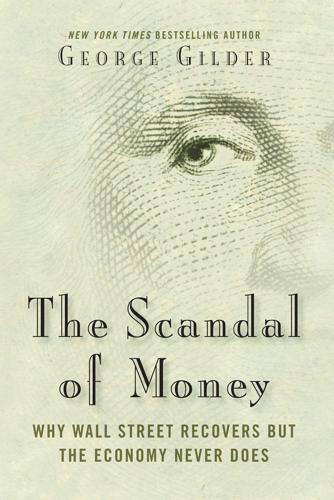
The Scandal of Money
by
George Gilder
Published 23 Feb 2016
The figures on jobs contribution from venture capital vary from 11 percent to 17 percent, but since the epochs of slavery and socialism all jobs have stemmed from the process of knowledge accumulation and learning, which is the focus of venture investment. 3.Charles Gave, “Indexation=Parasitism,” GavekalDragonomics (Hong Kong: Gavekal Research, July 15, 2014), 1. 4.John C. Bogle, The Clash of Cultures: Investment vs. Speculation (New York, NY: John Wiley and Sons, 2012). Bogle astonishingly sees the culture of investment as index funds and the culture of speculation as actively managed capital. 5.Nassim Nicholas Taleb and Mark Spitznagel, blog post, Global Public Square, CNN, October 2012. 6.Ibid. 7.Robert Laughlin, A Different Universe (New York, NY: Basic Books, 2006). 8.Robert J.
…
The anomalous rise of Apple to the world’s most valuable corporation has saved the careers of thousands of managers. Momentum prevails until it stops. But as the economist Charles Gave of Gavekal puts it, “In a true capitalist system, the rule is the higher the price the lower the demand. With indexation, the higher the price, the higher the demand. This is insane.”3 Yet as pioneered by the laureled John Bogle at Vanguard and encouraged by the SEC’s insider-trading phobias, these parasitical and distortionary index funds directly extinguish knowledge and learning in the economy.4 Vanguard now passively “manages” some $2.9 trillion of assets while contributing nothing to the investment process. Rather than investing in the market, they parasitically infest and congest it.

The Intelligent Asset Allocator: How to Build Your Portfolio to Maximize Returns and Minimize Risk
by
William J. Bernstein
Published 12 Oct 2000
Business One Irwin, 1991. Peters, Thomas J., and Waterman, Robert W. Jr., In Search of Excellence: Lessons from America’s Best Companies. Harper Collins, 1982. Siegel, Jeremy, Stocks for the Long Run. McGraw-Hill, 2000. Value Line Graphic Supplement 1994 (valuation historical data). Chapter 8 Bogle, John C., Bogle on Mutual Funds. Dell, 1994. Bogle, John C., Common Sense on Mutual Funds. Wiley, 1999. Cooley, P. L., Hubbard, C. M., and Walz, D. T., “Sustainable Withdrawal Rates from Your Retirement Portfolio.” Financial Counseling and Planning, 10(1), 39–47. Edleson, Michael E., Value Averaging: The Safe and Easy Strategy for Higher Investment Returns.
…
All of the books I shall recommend are quite well written and should not serve as substitutes for sleeping medicine. A Modest Reading List 1. A Random Walk Down Wall Street, by Burton Malkiel. An excellent investment primer, it explains the basics of stocks, bonds, and mutual funds and will reinforce the efficient-market concept. 2. Common Sense on Mutual Funds. Replaces Bogle on Mutual Funds, by who else, John Bogle. This will provide more detail than you ever wanted to know about this important investment vehicle. Mr. Bogle is the chairman and founder of the Vanguard Group, and he has been an important voice in the industry for decades. Beautifully written, opinionated, and highly recommended. The book also demonstrates the democratization which has swept the investment industry in recent years.

Stocks for the Long Run, 4th Edition: The Definitive Guide to Financial Market Returns & Long Term Investment Strategies
by
Jeremy J. Siegel
Published 18 Dec 2007
Actively managed equity funds did on average outperform the Wilshire 5000 and the S&P 500 indexes during the period from 1975 through 1983 when small stocks returned a spectacular 35.32 percent per year. Equity mutual funds generally do well when small stocks outperform large stocks, as many money managers seek to boost performance by buying smaller-sized firms. 3 Fund data provided by the Vanguard Group. See John C. Bogle, Bogle on Mutual Funds, Burr Ridge, Ill.: Irwin Professional Publishing, 1994, for a fuller description of these data. TABLE 20–1 Equity Mutual Funds and Benchmark Returns: Annual Compound Returns (Excluding Sales and Redemption Fees), January 1971 through December 2006 (Standard Deviations in Parentheses) 344 PART 5 Building Wealth through Stocks Since 1983, when the small stocks surge ended, the performance of the average mutual fund has been worse, falling nearly 11⁄2 percentage points per year behind either the Wilshire 5000 or the S&P 500 Index.
…
First, in seeking superior returns, a manager buys and sells stocks, which involves brokerage commissions and paying the bid-ask spread, or the difference be- 7 Darryll Hendricks, Jayendu Patel, and Richard Zeckhauser, “Hot Hands in Mutual Funds: ShortRun Persistence of Relative Performance, 1974–1988,” Journal of Finance, vol. 48, no. 1 (March 1993), pp. 93–130. 8 Edwin J. Elton, Martin J. Gruber, and Christopher R. Blake, “The Persistence of Risk-Adjusted Mutual Fund Performance,” Journal of Business, vol. 69, no. 2 (April 1996), pp. 133–157. 9 Burton G. Malkiel, A Random Walk Down Wall Street, 8th ed., New York: Norton, 2003, pp. 372–274. 10 John C. Bogle, The Little Book of Common Sense Investing, Hoboken, N.J.: Wiley, 2007, Chap. 9. CHAPTER 20 Fund Performance, Indexing, and Beating the Market 349 tween the buying and the selling price of shares. Second, investors pay management fees (and possibly sales, or “load,” fees) to the organizations and individuals that sell these funds.
…
CHAPTER 20 Fund Performance, Indexing, and Beating the Market 351 THE INCREASED POPULARITY OF PASSIVE INVESTING Many investors have realized that the poor performance of actively managed funds relative to benchmark indexes strongly implies that they would do very well to just equal the market return of one of the broadbased indexes. Thus, the 1990s witnessed an enormous increase in passive investing, the placement of funds whose sole purpose was to match the performance of an index. The oldest and most popular of the index funds is the Vanguard 500 Index Fund.12 The fund, started by visionary John Bogle, raised only $11.4 million when it debuted in 1976, and few thought the concept would survive. But slowly and surely indexing gathered momentum, and the fund’s assets reached $17 billion at the end of 1995. In the latter stages of the 1990s bull market, the popularity of indexing soared. By March 2000, when the S&P 500 Index reached its alltime high, the fund claimed the title of the world’s largest equity fund with assets over $100 billion.
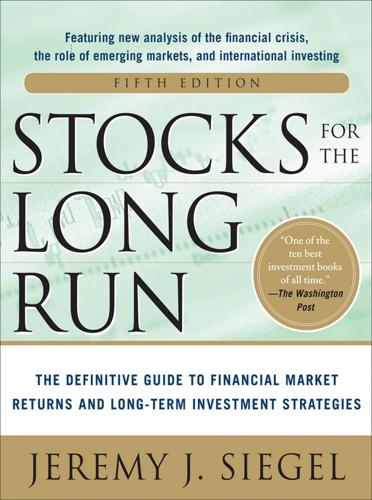
Stocks for the Long Run 5/E: the Definitive Guide to Financial Market Returns & Long-Term Investment Strategies
by
Jeremy Siegel
Published 7 Jan 2014
Benjamin Graham and Seymour Chatman, ed., Benjamin Graham: The Memoirs of the Dean of Wall Street, New York: McGraw-Hill, 1996, p. 273. 2. Charles D. Ellis, “The Loser’s Game,” Financial Analysts Journal, vol. 31, no. 4 (July/August 1975). 3. Fund data provided by Walter Lenhard of the Vanguard Group. See John C. Bogle, Bogle on Mutual Funds, Burr Ridge, IL: Irwin Professional Publishing, 1994, for a fuller description of these data. 4. Burton G. Malkiel, A Random Walk Down Wall Street: The Time-Tested Strategy for Successful Investing, 5th ed., New York: Norton, 1990, p. 362. 5. The standard deviation of the Magellan Fund over Lynch’s period was 21.38 percent, compared with 13.88 percent for the Wilshire 5000, while its correlation coefficient with the Wilshire was .86. 6.
…
Darryll Hendricks, Jayendu Patel, and Richard Zeckhauser, “Hot Hands in Mutual Funds: Short-Run Persistence of Relative Performance, 1974-1988,” Journal of Finance, vol. 48, no. 1 (March 1993), pp. 93-130. 9. Edwin J. Elton, Martin J. Gruber, and Christopher R. Blake, “The Persistence of Risk-Adjusted Mutual Fund Performance,” Journal of Business, vol. 69, no. 2 (April 1996), pp. 133-157. 10. Burton G. Malkiel, A Random Walk Down Wall Street, 8th ed., New York: Norton, 2003, pp. 372-274. 11. John C. Bogle, The Little Book of Common Sense Investing, Hoboken, NJ: Wiley, 2007, Chap. 9. 12. Ellis, “The Loser’s Game,” Financial Analysts Journal, p. 19. 13. Five years before the Vanguard 500 Index Fund, Wells Fargo created an equally weighted index fund called “Samsonite,” but its assets remained relatively small. 14.
…
THE INCREASED POPULARITY OF PASSIVE INVESTING Many investors have realized that the poor performance of actively managed funds relative to benchmark indexes strongly implies that they would do very well to just equal the market return of one of the broad-based indexes. Thus, the 1990s witnessed an enormous increase in passive investing, the placement of funds whose sole purpose was to match the performance of an index. The oldest and most popular of the index funds is the Vanguard 500 Index Fund.13 The fund, started by visionary John Bogle, raised only $11.4 million when it debuted in 1976, and few thought the concept would survive. But slowly and surely, indexing gathered momentum, and the fund’s assets reached $17 billion at the end of 1995. In the latter stages of the 1990s bull market, the popularity of indexing soared. By March 2000, when the S&P 500 Index reached its all-time high, the fund claimed the title of the world’s largest equity fund, with assets over $100 billion.

Adaptive Markets: Financial Evolution at the Speed of Thought
by
Andrew W. Lo
Published 3 Apr 2017
Instead, he advised readers to put their money in broadly diversified, passive mutual funds that charged minimal fees—and millions of his readers did. In a curious twist of fate, a former Princeton undergraduate launched a mutual fund company for this exact purpose a year after Malkiel’s book debuted. You may have heard of this individual, the index fund pioneer John C. Bogle. His little startup, the Vanguard Group, manages over $3 trillion and employs more than fourteen thousand people as of December 31, 2014.5 Vanguard’s main message, and the advice most often dispensed to millions of consumers, is “don’t try this at home.” Don’t try to beat the market. Instead, stick to passive buy-and-hold investments in broadly diversified stock index funds, and hold these investments until you retire.
…
The CAPM allowed investors to construct an efficient portfolio simply by holding a basket of all stocks in proportion to their market capitalization—in other words, a portfolio that simulated the whole stock market (Principle 3). The Efficient Markets Hypothesis, meanwhile, meant that active investing couldn’t outperform passive investing on average, after accounting for the transactions costs and fees. The index fund business may have grown from seeds produced by academic research, but most people credit John Bogle as the pioneer who planted those seeds and cultivated their first harvest in 1976: the Vanguard Index Trust. However, this was just the first index mutual fund. Bogle generously credited the roots of his business to others: The basic ideas go back a few years earlier. In 1969–1971, Wells Fargo Bank had worked from academic models to develop the principles and techniques leading to index investing.
…
In fact, the Samsonite account was launched during the era of fixed commissions, when the standard brokerage commission was 2 percent or higher (regulators ended this era on May 1, 1975, of which more later). Lower costs for the portfolio manager would eventually translate, through competition, into lower costs for the investor, and this has become one of the hallmarks of the index fund industry, thanks in large part to John Bogle. Bogle has advanced his own alternative to the Efficient Markets Hypothesis, which he calls the Cost Matters Hypothesis, a theory I heartily support. Mutual fund fees can do remarkable damage to an investor’s wealth over time. In many cases, it can completely overwhelm a portfolio manager’s alpha (if it exists).

The Success Equation: Untangling Skill and Luck in Business, Sports, and Investing
by
Michael J. Mauboussin
Published 14 Jul 2012
Raynor, and Mumtaz Ahmed, “How Long Must a Firm Be Great to Rule Out Luck? Benchmarking Sustained Superior Performance Without Being Fooled By Randomness,” Strategic Management Journal 33, no. 4 (April 2012): 387–406. 22. Charles MacKay, Extraordinary Delusions and the Madness of Crowds (New York: Three Rivers Press, 1995). 23. John C. Bogle, Common Sense on Mutual Funds: Fully Updated 10th Anniversary Issue (Hoboken, NJ: John Wiley & Sons, 2010). 24. Werner F. M. De Bondt and Richard H. Thaler, “Anomalies: A Mean-Reverting Walk Down Wall Street,” Journal of Economic Perspectives 3, no. 1 (Winter 1989): 189–202. 25. Mark Grinblatt and Sheridan Titman, “The Persistence of Mutual Fund Performance,” Journal of Finance 47, no. 5 (December 1992): 1977–1984; Darryll Hendricks, Jayendu Patel, and Richard Zeckhauser, “Hot Hands in Mutual Funds: Short-Run Persistence of Relative Performance, 1974–1988,” Journal of Finance 48, no. 1 (March 1993): 93–129; and Stephen J.
…
Prices in markets reflect the interaction of lots of investors, and we know that identifying a cause for any given effect in these kinds of systems is notoriously difficult. Booms and crashes have been consistent features of markets for centuries, and there is no simple way to anticipate the behavior of markets in the short-term.22 Reversion to the mean is a powerful force in investing, too. John Bogle, a luminary of the investment industry, illustrates this by ranking mutual funds in four groups based on results in the 1990s and seeing how those groups performed in the 2000s. The group that was most successful, the top fourth of the mutual funds, handily outpaced the average fund in the 1990s.
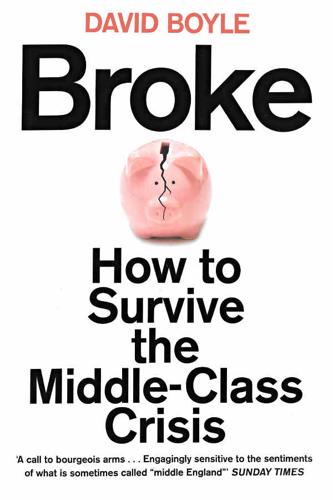
Broke: How to Survive the Middle Class Crisis
by
David Boyle
Published 15 Jan 2014
, Money Week, 1 Aug. 2006. [20] Fowler, 222. [21] Austin Mitchell and Prem Sikka, Pensions Crisis: A failure of public policy-making (Basildon, Association for Accountancy & Business Affairs, 2006). [22] Independent, 17 May 2009. [23] This example is worked out in more detail in Morris and Palmer, 25ff. [24] John C. Bogle, Enough: True measures of money, business and life (New York, John Wiley, 2009), 30. [25] This example is worked out more clearly for an American audience in Bogle, 42–3. [26] Observer, 5 May 2002. [27] Anthony Hilton, ‘Here’s how to solve the pension problem, Ed’, Evening Standard, 17 Jul. 2012. 6 The fifth clue: the great education panic [1] Evening Standard, 11 Sept. 2012
…
— is the high charges levied, rather furtively, by the financial services industry on middle-class thrift. Other kinds of investment are in some ways even worse, and again — if you dare to invest as an ordinary punter — the implacable arithmetic of the investment world counts against you. The American mutual fund innovator John Bogle has done more than almost anyone else to lift the lid on the way the system extracts money from savers. Bogle is an extraordinary man, a pioneer of the idea of index-linked funds, one of those Wall Street giants that have always shunned Wall Street, and — like Warren Buffett — he has kept up a sceptical commentary about the excesses of his own sector.

The Trouble With Billionaires
by
Linda McQuaig
Published 1 May 2013
In the past, corporate and financial professionals were regarded as agents who managed the enterprises of the owning class. In recent decades, however, these management professionals have moved centre-stage, grabbing more power for themselves – and a much larger share of the financial rewards. The result, according to John C. Bogle, founder and former chairman of US-based Vanguard Group mutual fund organization, has been ‘grotesquely excessive compensation paid to executive chiefs’ – compensation that is ‘unjustified by any remotely comparable business achievement’.18 Bogle argues that the corporate world is now riddled with conflicts of interest, leaving little check on the cosy relations between CEOs and corporate directors, compensation committees and auditors.
…
With that disapproval largely set aside in recent decades – indeed replaced with a culture that reveres ‘wealth creators’ – there’s been nothing to discourage corporate boards from indulging themselves. The problem has been compounded by the tendency of corporate boards to match what other corporate boards are doing. ‘We pay our executives not on the basis of performance, but on the basis of peer group,’ notes John C. Bogle, former chairman of the Vanguard Group. Bogle says that this creates a ‘ghastly ratchet effect’ as cosy corporate boards bring up the pay of their CEOs to match what’s going on at other similarly cosy boards.10 The cosy nature of corporate boards goes a long way towards explaining how executive compensation has climbed skyward – in an era of often lacklustre corporate performance.
…
When my life hit rock bottom, that safety net, threadbare though it had become under John Major’s government, was there to break the fall. I cannot help feeling, therefore, that it would have been contemptible to scarper for the West Indies at the first sniff of a seven-figure royalty cheque. This, if you like, is my notion of patriotism.12 To these powerful commentaries, let’s add a third. Here’s John C. Bogle, founder of the Vanguard Group, nicely capturing the pointlessness of excessive greed: At a party given by a billionaire on Shelter Island, the late Kurt Vonnegut informs his pal, the author Joseph Heller, that their host, a hedge fund manager, had made more money in a single day than Heller had earned from his wildly popular novel Catch 22 over its whole history.
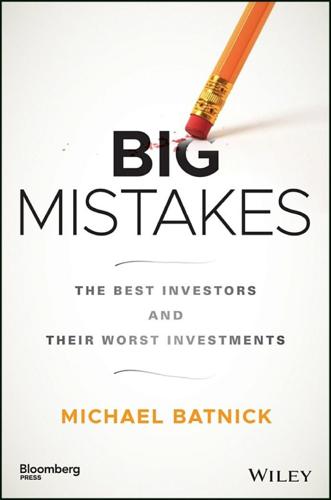
Big Mistakes: The Best Investors and Their Worst Investments
by
Michael Batnick
Published 21 May 2018
Notes 1. Credit Suisse, “Looking for Easy Games,” January 4, 2017. 2. Morningstar, “Recommendations for Fund Companies Not Named Vanguard,” December 27, 2016. 3. John C. Bogle, “The Professor, the Student, and the Index Fund,” johncbogle.com, September 4, 2011. 4. Vanguard, “Reflections on Wellington Fund's 75th Birthday,” 2006. 5. Ibid. 6. Adam Smith, Supermoney, foreword by John C. Bogle (Hoboken, NJ: Wiley, 2007). 7. John C. Bogle, The Clash of the Cultures (Hoboken, NJ: Wiley, 2012). 8. Institutional Investor, “The Whiz Kids Take Over,” January 1968. 9. Bogle, The Clash of the Cultures, 262. 10.
…
Michael Regan, “Q&A with Jack Bogle: ‘We're in the Middle of a Revolution,’” Bloomberg.com, November 23, 2016. 11. John Brooks, The Go‐Go Years (Hoboken, NJ: Wiley, 1999), 128. 12. Bogle, The Clash of the Cultures, 272. 13. Smith, Supermoney. 14. Ibid. 15. Bogle, The Clash of the Cultures, 272. 16. Smith. 17. Ibid. 18. Quoted in John C. Bogle, “Lightning Strikes,” Institutional Investor 40, no. 5 (Special 40th Anniversary Issue, 2014): 42–59. 19. Bogle, The Clash of the Cultures, 278. 20. Ibid. 21. Ali Masarwah. “Indexing, Vanguard Drove Global Fund Flows,” Morningstar.com, February 4, 2017. CHAPTER 6 Michael Steinhardt Stay in Your Lane Investors who confine themselves to what they know, as difficult as that may be, have a considerable advantage over everyone else.
…
Brooks and Lewis, The Go‐Go Years, 211. 6. Smith, The Money Game, 180. 7. Brooks and Lewis, The Go‐Go Years, 5. 8. Smith, The Money Game, 23. 9. Lowenstein, Buffett, 99. 10. Brooks and Lewis, The Go‐Go Years, 135. 11. New York Times, “Fidelity Capital Shows Wide Gains,” July 7, 1961. 12. John C. Bogle, Foreword to Supermoney by Adam Smith (Hoboken, NJ: Wiley, 2007). 13. Brian Stelter, “Gerald Tsai, Innovative Investor, Dies at 79,” New York Times, July 11, 2008. 14. Bogle, Supermoney. 15. Smith, The Money Game, 202–203. 16. David N. Dremen, Psychology and the Stock Market (New York: Amacom, 1977), 84. 17.

The Gone Fishin' Portfolio: Get Wise, Get Wealthy...and Get on With Your Life
by
Alexander Green
Published 15 Sep 2008
He ends his book by telling readers, “What the market is going to do ought to be irrelevant. If I could convince you of this one thing, I’d feel this book had done its job.” Why doesn’t your investment advisor, obviously a smart guy, give up the economic forecasts and market predictions? Vanguard® founder John Bogle put it best when he wrote in The Little Book of Common Sense Investing, “It’s amazing how difficult it is for a man to understand something if he’s paid a small fortune not to understand it.” This message also goes against the instincts—not to mention the hypercharged emotions—of most investors.
…
Of course, some financial advisors simply shrug and tell you, “Don’t buy the average funds. Buy the good ones.” But there’s the rub. Studies show that a fund that beats the market one year is no more likely than its competitors to outperform it the following year. In The Little Book of Common Sense Investing, Vanguard founder John Bogle quotes David Swenson, chief investment officer of the Yale University Endowment Fund: “A miniscule 4% of funds produce market-beating after-tax results with a scant 0.6% (annual) margin of gain. The 96% of funds that fail to meet or beat the Vanguard 500 Index Fund lose by a wealth-destroying margin of 4.8% per annum.”
…
It operates the funds “at cost”—charging only the amounts needed to cover operating costs and extracting no profits. That means no fund family is likely to seriously challenge Vanguard’s low-cost leadership. Vanguard also embodies a particular philosophy of investing, one that, in many respects, dovetails nicely with our Gone Fishin’ Portfolio. The story of this fund family and its founder John Bogle is one worth telling. In 1949, Bogle was a graduate student at Princeton University who needed a topic for his thesis. He stumbled on an article in Fortune magazine about the mutual fund industry, an industry so small and young at the time that Bogle had never heard of it. Since no academics had researched or published on the topic, Bogle decided to lead the way.
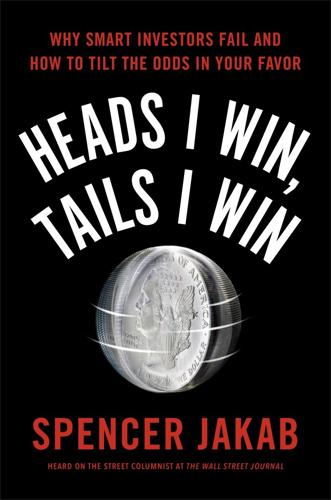
Heads I Win, Tails I Win
by
Spencer Jakab
Published 21 Jun 2016
Try 2 Out of 2,862 Funds,” July 19, 2014, http://www.nytimes.com/2014/07/20/your-money/who-routinely-trounces-the-stock-market-try-2-out-of-2862-funds.html?_r=0. 4. John Bogle, “The Arithmetic of All-In Investment Expenses,” Financial Analysts Journal 70, no. 1 (January–February 2015). 5. Mitch Tuchman, “Warren Buffett to Heirs: Put My Estate in Index Funds,” MarketWatch, March 13, 2014, http://www.marketwatch.com/story/warren-buffett-to-heirs-put-my-estate-in-index-funds-2014-03-13. 6. “Convergence! The Great Paradox: Just as Active Fund Management Becomes More and More Like Passive Indexing, So Passive Indexing Becomes More and More Like Active Fund Management,” remarks by John Bogle, founder and former chairman, the Vanguard Group, before “The Art of Indexing” conference, September 30, 2004, Washington, DC, http://www.vanguard.com/bogle_site/sp20040930.htm. 7.
…
Sure, but you’re fooling yourself if you think your odds are good of being one of them. The more passive your approach to investing, the greater the likelihood your results will match the market return—a benchmark most people reading this fail to come anywhere close to meeting. That’s the gospel of plenty of smart, successful investors, notably John Bogle, the father of index funds, who says, “Don’t just do something, stand there.” It can’t be repeated enough and is the first, easiest, and most productive step out of Lake Moneybegone. It might seem counterintuitive that a person who’s confident enough to be very active would do worse than another who is largely passive.
…
Since the market usually is going up or at least paying dividends, having cash lying around that earns next to nothing adds another 0.15 percent.4 Add it all up and active funds’ 2.27 percentage points of total visible and invisible expenses is 2.21 points higher than the largest stock index fund. Even if we assume that a typical fund manager can match the performance of the market exactly, that’s a major drag that compounds over time and a big reason why most investors live in Lake Moneybegone. John Bogle, the founder of Vanguard Group and the man who started the first index mutual fund back in 1976, lays out the argument in dollars and cents. His starting premise is that an active manager will neither do better nor worse than an index fund once costs are stripped out. He uses the example of a thirty-year-old making $30,000 a year who starts saving for eventual retirement at age seventy.

A Wealth of Common Sense: Why Simplicity Trumps Complexity in Any Investment Plan
by
Ben Carlson
Published 14 May 2015
Warren Buffett, Letter to Shareholders, 1993, www.berkshire hathaway.com/letters/1993.html. 15. Janet Lowe, Damn Right: Behind the Scenes with Berkshire Hathaway Billionaire Charlie Munger (Hoboken, NJ: John Wiley & Sons, 2003). CHAPTER 3 Defining Market and Portfolio Risk The stock market is a giant distraction to the business of investing. —John Bogle In the 1960s there was a French film called The Lovers (Les Amants). It turned out to be a little risqué for some people in the Midwest. The state of Ohio ruled the film to be obscene and pornographic. The case eventually made it all the way to the Supreme Court, where it was ruled that the movie was not, in fact, too obscene to be viewed by the public.
…
Behavior has always been more important than costs, but this will only be magnified as the cost structure falls. The biggest things for investors is to understand what you own and why you own it. The Benefits of Doing Nothing Lethargy, bordering on sloth, should remain the cornerstone of an investment style. —Warren Buffett Vanguard founder John Bogle once said, “Don't just do something. Stand there!” This is easier said than done for most people. Investors can feel lazy if they're not doing something, so people are constantly trying to keep themselves busy. There will always be a new hot investment idea that grabs your attention. Or maybe you have a model, but it's not working, so the first inclination is to make changes.
…
Like the study from above, both surviving and outperforming is quite the difficult task for fund managers over longer periods. Only 18 percent, or about 275 funds, of the initial 1,540 funds in the study both survived the full period and outperformed their benchmarks.10 In a separate study, Vanguard founder John Bogle discovered that almost half of all mutual funds created in the 1990s stock market boom ended up failing and following the technology bust there were 1,000 fund failures from 2000 to 2004.11 Exhibit 4: If Picking One Active Fund Is Hard . . . Rick Ferri and Alex Benke performed a study that spanned 16 years by looking at Vanguard's three-fund portfolio of total market index funds in U.S. stocks, foreign stocks, and U.S. bonds.
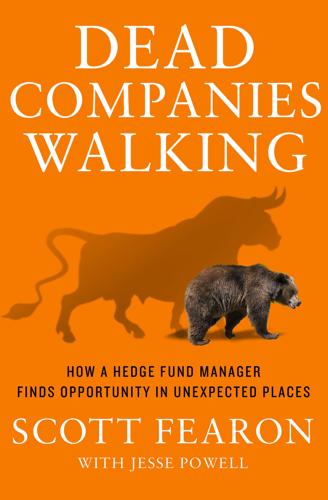
Dead Companies Walking
by
Scott Fearon
Published 10 Nov 2014
It also creates an even more destructive mind-set—once they themselves rise to positions of power, they see themselves as infallible and worthy of worship. Add it all up and there’s only one conclusion you can reach: these are the last people you want safeguarding your money. And it’s not just me saying this. The numbers back me up. The great author and investor John Bogle—who invented the passive index fund back in the 1970s—examined the average returns of equity mutual funds from 1983 to 2003. A dollar invested in those kinds of funds in the early 1980s netted just $7.10 in profits twenty years later. Over the same period, a dollar invested in the S&P 500 index, which Bogle’s Vanguard 500 Fund tracks, would have brought in over $11.50.§ Think about those numbers for a second.
…
I don’t know how else to put this, so I’ll just be blunt: If you are an individual investor, you should not under any circumstances trust your money to a Wall Street brokerage or investment management company. The vast majority of people in my business have the wrong temperaments for investing. So unless you are uniquely positioned to find that rare manager who can outperform the market over the long term, do what John Bogle has been urging people to do for decades: put your money in an index fund and leave it there. You’ll make more, and you’ll pay less in fees to do it. The attributes I listed earlier—joinerism, power worship, hypercompetitiveness, intellectual torpor—lead to some very common investment mistakes like averaging down and trusting the word of so-called experts.
…
And yet, year after year, Big Finance continues to reap massive profits—not for its clients, of course, but for itself. The asset-size paradox isn’t the only thing that separates Wall Street from the rest of the private sector. Can you think of another business in the world that would continue to exist as a going concern even after it had been proven definitively—as John Bogle of Vanguard proved about the financial industry—that most of its products are vastly inferior to other, cheaper alternatives like index funds? I can’t. How about a business whose most prestigious firms have been caught defrauding their own customers not once, but over and over again? In the normal corporate world, would such a business not only continue to operate, but actually make more and more money every year?
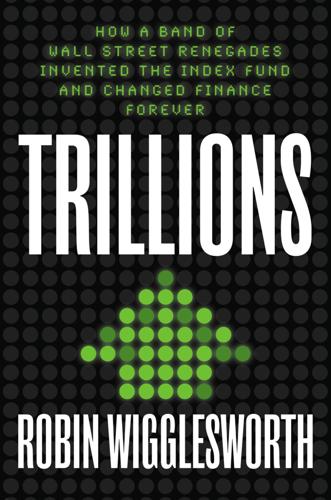
Trillions: How a Band of Wall Street Renegades Invented the Index Fund and Changed Finance Forever
by
Robin Wigglesworth
Published 11 Oct 2021
On paper, the merger seemed sensible to both insiders and outsiders. “Wellington gets a hot research group deep with young investment management and analyst talent, and Ivest gets the benefit of Wellington’s prestigious name, its powerful distribution organization, and the administrative and marketing talents of John Bogle,” Institutional Investor wrote in a cover story on the merger, titled “The Whiz Kids Take Over at Wellington,” illustrated by Bogle as a multi-armed quarterback handing balls of financial securities to the four Boston partners.23 Initially, the merger appeared a runaway success. Buoyed by the marriage of its strong returns with Wellington’s powerful distribution network, Ivest’s assets vaulted from almost $50 million at the end of 1966 to $340 million by the close of 1968.
…
Fabozzi, Perspectives on Equity Indexing, 42. 41. Paul Samuelson, “Index-Fund Investing,” Newsweek, August 1976. CHAPTER 6: THE HEDGEHOG 1. Jack Bogle, Stay the Course: The Story of Vanguard and the Index Revolution (Hoboken, NJ: Wiley, 2018), 262. 2. Lewis Braham, The House That Bogle Built: How John Bogle and Vanguard Reinvented the Mutual Fund Industry (New York: McGraw-Hill, 2011), chapter 1, ePub. 3. Gene Colter, “Change of Heart,” Wall Street Journal, September 24, 2004. 4. Braham, The House That Bogle Built, chap. 1, ePub. 5. Bogle, Stay the Course, 258. 6. Bogle, Stay the Course, 258. 7.
…
Braham, The House That Bogle Built, chap. 5, ePub. 34. Robin Wigglesworth, “Passive Attack: The Story of a Wall Street Revolution,” Financial Times, December 20, 2018.” 35. Braham, The House That Bogle Built, chap. 5, ePub. 36. Bogle, Stay the Course, 25. CHAPTER 7: BOGLE’S FOLLY 1. Lewis Braham, The House That Bogle Built: How John Bogle and Vanguard Reinvented the Mutual Fund Industry (New York: McGraw-Hill, 2011), chap. 6, ePub. 2. Jack Bogle, Character Counts: The Creation and Building of the Vanguard Group (New York: McGraw-Hill, 2002), 7. 3. Jack Bogle, Stay the Course: The Story of Vanguard and the Index Revolution (Hoboken, NJ: Wiley, 2018), 32. 4.
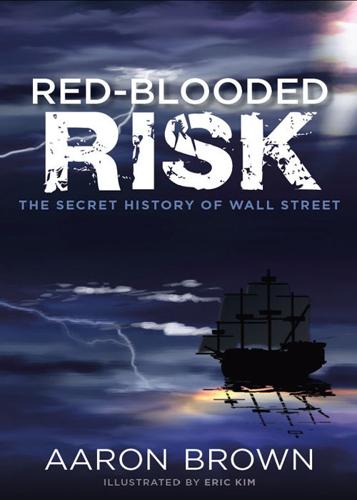
Red-Blooded Risk: The Secret History of Wall Street
by
Aaron Brown
and
Eric Kim
Published 10 Oct 2011
Curtis Faith was one for the original turtles, and he describes his methods in Trading from Your Gut: How to Use Right Brain Instinct & Left Brain Smarts to Become a Master Trader. But the classic account of trading is The Education of a Speculator by Victor Niederhoffer. For practical finance, a great book is John Bogle on Investing: The First 50 Years by John Bogle. John has not become a brand, but he does have a large and raucous base of fans. They call themselves Bogleheads. David Einhorn is one of the great qualitative investors in the world. He wrote Fooling Some of the People All of the Time: A Long Short (and Now Complete) Story.
…
But Red Blood, Blue Blood, Cold Blood, Thin Blood, Hot Blood, Unblooded, and Blood Sucker are composites of real people I have worked with over the years. So I acknowledge here my debt to the dozens of people who provided slices of various characters’ history and attitudes. Many people read part or all of the manuscript and sent useful comments. Brandon Adams, Gustavo Bamberger, Bill Benter, John Bogle, Rick Bookstaber, Reuven Brenner, Eugene Christiansen, Emanuel Derman, Art Duquette, Dylan Evans, Doyne Farmer, Justin Fox, Kenneth French, Lisa Goldberg, James Grosjean, Ian Hacking, Michael Heneberry, Carey Hobbs, Craig Howe, James McManus, Michael Maubossin, Nick Maughan, Perry Mehrling, Robert Merton, Joe Nocera, John O’Brien, Deborah Pastor, Scott Patterson, William Poundstone, Kevin Rosema, Myron Scholes, James Stoner, Nassim Taleb, Edward Thorp, Whitney Tilson, James Ward, Paul Wilmott, and Bruce Zastera were particularly helpful.
…
Among other things, it guarantees that they are overinvested in anything overpriced, and underinvested in anything underpriced. It may be impossible to tell overpriced assets from underpriced ones, but that doesn’t matter; it’s a mathematical certainty the index fund investor has the worst of both worlds. (Of course, as Ken French and John Bogle independently pointed out to me, half the nonindex investors must be even more overweighted in the overpriced assets, and all the nonindex investors pay higher costs.) Large, diversified portfolios have also been blamed for investors not providing oversight to their investments, and for feeding bubbles and crashes.
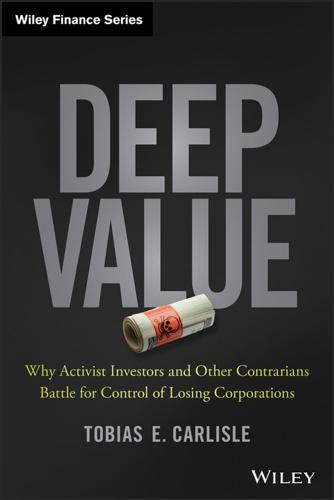
Deep Value
by
Tobias E. Carlisle
Published 19 Aug 2014
Devil Take the Hindmost: A History of Financial Speculation (New York: Penguin Group) 2000. 34. Ibid. 35. Ibid. 36. Ibid. 37. Sobel, 1984. 38. Ibid. Trading in Glamour: The Conglomerate Era 117 39. Justin Fox. The Myth of the Rational Market: A History of Risk, Reward, and Delusion on Wall Street. (New York: HarperCollins) 2009. 40. John. C. Bogle. “Statement of John C. Bogle to the United States Senate Governmental Affairs Subcommittee,” November 3, 2003. Available at http:// www.vanguard.com/bogle_site/sp20031103.html. 41. J. Lakonishok, A. Shleifer, and R.W. Vishny.“Contrarian Investments, Extrapolation, and Risk.” Journal of Finance, Vol. XLIX, No. 5, (1994) pp. 1541–1578. 42.
…
Worse, Cowles concluded of the performances of those few who had beaten the market that their results were “little, if any, better than what might be expected to result from pure chance.”39 He made the last claim after he assembled random market analyses from shuffled decks containing hundreds of cards, and found that the cards tended to beat the professional analysts. More recently John C. Bogle, legendary founder of The Vanguard Group, appeared before the Senate Subcommittee on Financial Management, the Budget, and International Security on November 3, 2003, to demonstrate the paucity of the returns generated by professional investors. Bogle’s argument was that the competitive nature of the investment industry meant that the return of the average mutual fund should equal the return of the market less the fees charged by the mutual fund industry.
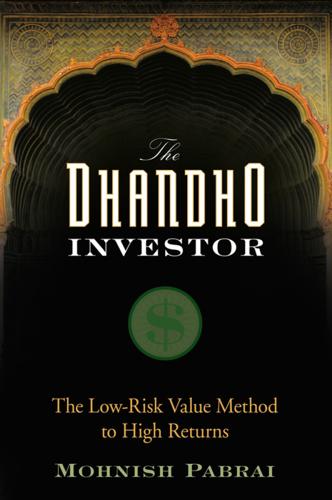
The Dhandho Investor: The Low-Risk Value Method to High Returns
by
Mohnish Pabrai
Published 17 May 2009
Lowenstein, Buffett: The Making of an American Capitalist (New York: Random House, 1997). 10 See note 8, 1964-1967 letters. 11 See note 10. 12 Michael Mauboussin, “Mauboussin on Strategy: Size Matters,” Legg Mason Capital Management, February 1, 2006, www.leggmason.com/funds/knowledge/mauboussin/Mauboussin_on_Strategy_020106.pdf. 13 John C. Bogle, Common Sense on Mutual Funds (New York: John Wiley & Sons, 1999). Chapter 11 1 Amar V. Bhide, The Origin and Evolution of New Businesses (Oxford: Oxford University Press, 2000). 2 CompuLink’s corporate web site, www.compulink-usa.com (accessed May 25, 2006). 3 Berkshire Hathaway annual meeting, Omaha, NE, May 1, 2000. 4 Warren Buffett, July 1999 at Allen & Co.’s annual conference /retreat in Sun Valley, ID.
…
(India: Auromere, 1999). 2 Simon Reynolds, Thoughts of Chairman Buffett (New York: Harper Collins, 1998). 3 Joel Greenblatt, The Little Book That Beats the Market (New York: John Wiley & Sons, 2005). 4 Universal Stainless & Alloy Products’ web site, www.univstainless.com (accessed July 22, 2006). 5 Berkshire Hathaway Annual Meeting, Omaha, NE, May 6, 1996. 6 Berkshire Hathaway Annual Meeting, Omaha, NE, May 3, 2003. 7 See note 6. 8 Warren Buffett, “1985 Letter to Shareholders of Berkshire Hathaway,” Letters to Shareholders of Berkshire Hathaway 1984, posted on the web site, www.berkshirehathaway.com. Chapter 16 1 John C. Bogle, Common Sense on Mutual Funds (New York: John Wiley & Sons, 1999). 2 Marcia Vickers, “The Money Game,” Fortune magazine, October 3, 2005. 3 David F. Swensen, Unconventional Success: A Fundamental Approach to Personal Investment (New York: Free Press, 2005). 4 See note 3. 5 Joel Greenblatt, The Little Book That Beats the Market (New York: John Wiley & Sons, 2005).
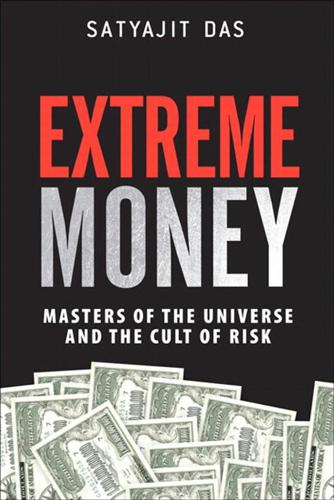
Extreme Money: Masters of the Universe and the Cult of Risk
by
Satyajit Das
Published 14 Oct 2011
“Interview by Farah Nayeri: Greenspan was “very bad” Fed chairman, says Artus of Natixis” (30 November 2007), Bloomberg. 49. Denny Gulino “Greenspan: Congress has “amnesia” re its part in crisis” (7 April 2010) (http://imarketnews.com/node/11417). 50. Vanessa Thorpe “Magical realism...and fakery: the ailing Nobel Laureate is writing the definitive account of his life” (21 January 2001) The Observer. 51. John C. Bogle (2007) The Little Book of Common Sense Investing: The Only Way to Guarantee Your Fair Share of Stock Market Returns, John Wiley, New Jersey: 39. 52. Philip Delves Broughton (2009) Ahead of the Curve: Two Years at Harvard Business School, Penguin Books, New York: 285. 53. Jennifer Burns (2009) How Markets Fail: The Logic of Economic Calamities, Oxford University Press, Oxford: 149. 54.
…
Bernstein (2009) A Splendid Exchange: How Trade Shaped The World, Grove Press, New York. Barton Biggs (2006) Hedge Hogging, John Wiley, New Jersey. Richard Bitner (2008) Confessions of a Sub-prime Lender: An Insider’s Tale of Greed, Fraud and Ignorance, Icon Books, London. Robin Blackburn (2002) Banking on Death, Verso, London. John Bogle (2009) Enough: True Measures of Money, Business and Life, John Wiley, New Jersey. Bill Bonner and Addison Wiggin (2006) Empire of Debt: The Rise of an Epic Financial Crisis, John Wiley, New Jersey. Richard Bookstaber (2007) A Demon of Our Own Design, John Wiley, New Jersey. Piers Brendon (2000) The Dark Valley: A Panorama of the 1930s, Pimlico, London.
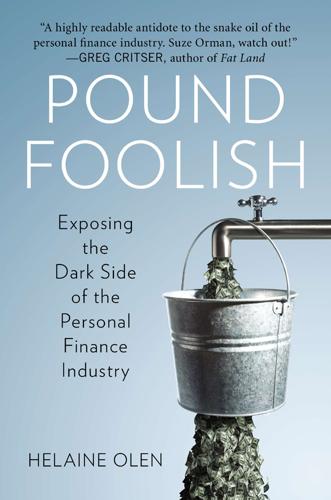
Pound Foolish: Exposing the Dark Side of the Personal Finance Industry
by
Helaine Olen
Published 27 Dec 2012
In what is now sometimes called our finance-based economy, most of us were not, it turns out, savvy winners, but chumps. In a poll CNBC conducted in 2010, a stunning 86 percent of people surveyed declared the stock market unfair to small investors, but fair for banks, hedge funds, and professional traders. Less than half of us even thought individual stocks were a good way to make a buck. Even John Bogle, the founder of the common-man mutual fund company the Vanguard Group, proclaimed we were losers, fleeced for fees by the financial services sector and buffeted by market speculators. “Our financial system has gone off the rails,” he told CBS News. Nonetheless, as we’ll see in the chapters to follow, the personal finance industrial complex continues to prosper.
…
Over the years Quinn made numerous enemies, ranging from brokers to heads of mutual fund companies, for relentlessly putting the financial interests of the consumer ahead of the financial interests of the financial services industry. Quinn sees herself as both a part of the consumer movement and the personal finance and investment communities. She names as her contemporaries such financial pioneers as Bruce Bent, the creator of the now ubiquitous money market fund, and John Bogle, the force behind Vanguard’s low-cost index funds. Yet a look at Quinn’s work demonstrates both the promise and the perils of the financial advice arena. A quick run through the many, many profiles of her penned over the years shows howlers mixed in with the prescient comments, sometimes in the same piece, proving how hard it is to get this forecasting thing right.
…
That will, of course, come on top of the fees you are already paying on the account. Fee-only financial planners and registered investment advisers (RIAs) are willing to help out too—provided, that is, they can count your savings toward their assets under management and collect the fees. Surveying the situation, no one less than John Bogle, the founder of the Vanguard Group and the man who pioneered the low-cost index fund, has come forward to say the mutual fund and retirement industries collect so much money in fees that the entire system is a “train wreck.” But a train wreck for your future retirement is a gravy train for those collecting the fees.
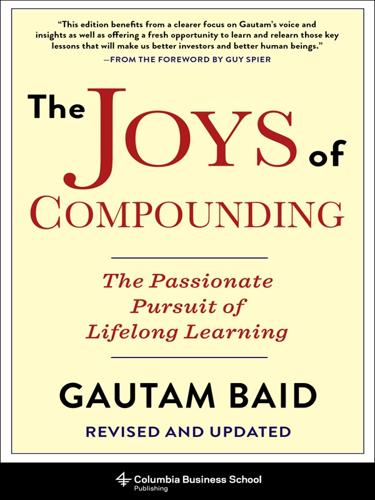
The Joys of Compounding: The Passionate Pursuit of Lifelong Learning, Revised and Updated
by
Gautam Baid
Published 1 Jun 2020
So the really big money tends to be made by investors who are right on qualitative decisions but, at least in my opinion, the more sure money tends to be made on the obvious quantitative decisions [emphasis added].20 CHAPTER 23 THE MARKET IS EFFICIENT MOST, BUT NOT ALL, OF THE TIME The stock market is a giant distraction to the business of investing. —John Bogle In Berkshire Hathaway’s 1987 annual letter to shareholders, Warren Buffett discussed the concept of Mr. Market: In my opinion, investment success will not be produced by arcane formulae, computer programs or signals flashed by the price behavior of stocks and markets. Rather an investor will succeed by coupling good business judgment with an ability to insulate his thoughts and behavior from the super-contagious emotions that swirl about the marketplace [emphasis added].
…
Peter is only $60,000 in total contributions behind Paul, and he still has forty years to go before he turns seventy, so he figures it isn’t too bad. When he reaches retirement, though, he has only $2.2 million. A mere $60,000 difference between Paul and Peter in cumulative investment turned into a $4.8 million difference in net worth. This example shows, as John Bogle would call it, “the relentless rules of humble arithmetic.”11 Time is power in investing. This is best illustrated by the timeless tale of Benjamin Franklin’s experiment with compound interest, which was driven by the strong optimism he had for his newly formed country at the time: When Franklin died in 1790, he left a gift of $5,000 to each of his two favorite cities, Boston and Philadelphia.
…
George Soros, Benoit Mandelbrot, and Richard Bookstaber made me aware of the intricate and highly dynamic feedback loops present in markets and social systems. John Maynard Keynes enlightened me on the significance of prevailing sentiments in markets and economies, and the critical role of timely government intervention. Burton Malkiel, Charles Ellis, and John Bogle taught me the importance of minimizing costs and staying the course. Phil Fisher, Peter Lynch, Ralph Wanger, Pat Dorsey, Tom Gayner, Terry Smith, Chuck Akre, Peter Cundill, William O’Neil, Jesse Stine, and Nicolas Darvas taught me how to pick a stock. Jesse Livermore taught me how to hold on to a stock and to respect the market’s collective wisdom above all else.
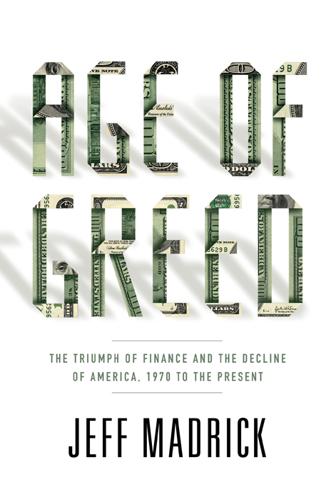
Age of Greed: The Triumph of Finance and the Decline of America, 1970 to the Present
by
Jeff Madrick
Published 11 Jun 2012
Rooney, et al., No. 02C2180, Northern District, Illinois. 24 IT WAS ALSO SUED: See in general, David Young, “Waste Firm Still Hauling Image Woes,” Chicago Tribune, October 6, 1991; and Partnoy, Infectious Greed, pp. 196–98. 25 IT WAS A MODEST FINE: Securities and Exchange Commission, Litigation Release, No. 19351, August 29, 2005. 26 BETWEEN 1990 AND 1994: John C. Bogle, The Battle for the Soul of Capitalism (New Haven, Conn.: Yale University Press, 2005), p. 111. 27 SECURITIES LAW PROFESSOR FRANK PARTNOY ARGUED: Partnoy, Infectious Greed, pp. 33, 166–68, 269. 28 BY 1996, AVERAGE CEO COMPENSATION: Kevin J. Murphy, “Executive Compensation,” April 1998, p. 90, http://ssrn.com/abstract=163914 or doi:10.2139/ssrn.163914. 29 AT THE HEIGHT OF THE BULL MARKET: Bogle, The Battle for the Soul of Capitalism, p. 17. 30 IN THE MID-1990S ALONE: Murphy, “Executive Compensation,” p. 6.
…
The government decided to prosecute on the basis of a flimsy case of tampering and obstruction of justice, rather than outright fraud, but after two trials ended in hung juries, Quattrone was acquitted in 2007 and back in the financial business. Kickbacks and payoffs contributed to the stock market bubble. But after the 2000 crash, nearly all the thousands of IPOs issued in the late 1990s had fallen to below their initial offering prices. Half of the ones that hadn’t gone out of business were selling for less than $1 a share. John Bogle, who had founded Vanguard Funds, estimated that the top executives of both old-line and newly public companies earned in total $1 trillion when they sold their shares during the bull market of the late 1990s. Fees and commission payments to investment banks, brokers, and mutual funds totaled another $1.275 trillion, he figured.
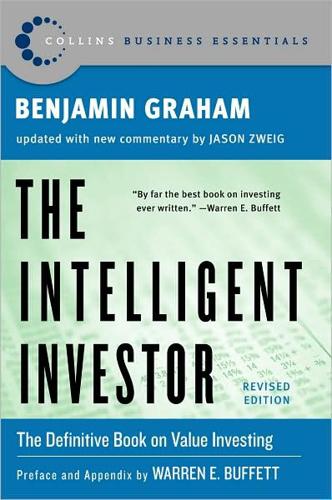
The Intelligent Investor (Collins Business Essentials)
by
Benjamin Graham
and
Jason Zweig
Published 1 Jan 1949
Wright; and the indefatigable Tara Kalwarski of Money. Superb ideas and critical readings came from Theodore Aronson, Kevin Johnson, Martha Ortiz, and the staff of Aronson + Johnson + Ortiz, L.P.; Peter L. Bernstein, president, Peter L. Bernstein Inc.; William Bernstein, Efficient Frontier Advisors; John C. Bogle, founder, the Vanguard Group; Charles D. Ellis, founding partner, Greenwich Associates; and Laurence B. Siegel, director of investment policy research, the Ford Foundation. I am also grateful to Warren Buffett; Nina Munk; the tireless staff of the Time Inc. Business Information Research Center; Martin Fridson, chief executive officer, FridsonVision LLC; Howard Schilit, president, Center for Financial Research & Analysis; Robert N.
…
The principle behind such option grants is to align the interests of managers with outside investors. If you are an outside Apple shareholder, you want its managers to be rewarded only if Apple’s stock earns superior returns. Nothing else could possibly be fair to you and the other owners of the company. But, as John Bogle, former chairman of the Vanguard funds, points out, nearly all managers sell the stock they receive immediately after exercising their options. How could dumping millions of shares for an instant profit possibly align their interests with those of the company’s loyal long-term shareholders? In Jobs’ case, if Apple stock rises by just 5% annually through the beginning of 2010, he will be able to cash in his options for $548.3 million.

A Random Walk Down Wall Street: The Time-Tested Strategy for Successful Investing
by
Burton G. Malkiel
Published 10 Jan 2011
This acknowledgment of my debt to her is the largest understatement of all. Finally, I would like to acknowledge with deep gratitude the assistance of the following individuals who made important contributions to earlier editions. They include: Peter Asch, Leo Bailey, Howard Baker, Jeffrey Balash, David Banyard, William Baumol, Clair Bien, G. Gordon Biggar Jr., John Bogle, Lynne Brady, John Brennan, Markus Brunnermeier, Claire Cabelus, Lester Chandler, Andrew Clarke, Abby Joseph Cohen, Douglas Daniels, Pia Ellen, Andrew Engel, Steve Feinstein, Barry Feldman, Roger Ford, Stephen Goldfeld, William Grant, Leila Heckman, William Helman, Roger Ibbotson, Deborah Jenkins, Barbara Johnson, George S.
…
THE VERDICT ON MARKET TIMING Many professional investors move money from cash to equities or to long-term bonds on the basis of their forecasts of fundamental economic conditions. Indeed, this is one reason many brokers give to support their belief in professional money management. The words of John Bogle, founder of the Vanguard Group of Investment Companies, are closest to my views on the subject of market timing. Bogle said, “In 30 years in this business, I do not know anybody who has done it successfully and consistently, nor anybody who knows anybody who has done it successfully and consistently.
…
ETFs require the payment of transactions costs, however, including brokerage fees* and bid-asked spreads. No-load index mutual funds will better serve investors who will be accumulating index shares over time in small amounts. I suggest that you avoid the temptation to buy or sell ETFs at any hour of the day and to buy such funds on margin. I agree with John Bogle, founder of the Vanguard Group, who says, “Investors cut their own throats when they trade ETFs.” If you are so tempted, follow the practice of Little Miss Muffet and run far away from the spiders and their siblings. In the table below, I list the ETFs that can be used to build your portfolio.

The Missing Billionaires: A Guide to Better Financial Decisions
by
Victor Haghani
and
James White
Published 27 Aug 2023
Then there are two MIT‐minted professors, one who suggests we should Risk Less and mostly invest in safe government bonds, while the other advocates that young adults hold a three times leveraged exposure to stocks. And these are just the books by the professors. Perhaps it's less surprising that we get diametrically opposed advice from industry titans advocating their own firm's offerings. For example, Vanguard founder John Bogle preached the benefits of index funds in The Little Book of Common Sense Investing, while the legendary (retired) manager of Fidelity's stock‐picking Magellan Fund, Peter Lynch, encourages investors to try to beat the market by picking stocks that make products they like in his popular One Up On Wall Street.
…
Investors may view foreign markets as having extra risk in terms of foreign currency fluctuations and possibly lower returns due to frictions in recovering foreign withholding tax on dividends. Some investors may also view their home equity market as being something of a hedge against their future consumption basket of high‐end luxury items, such as expensive homes, art, and travel. Warren Buffett and John Bogle have argued that US investors should only invest in US equities because it gives them plenty of international diversification through the foreign operations of US companies. We are more swayed by the arguments that foreign markets do provide diversification benefits. Even the foreign currency argument can be turned on its head, as exposure to other currencies can be a valuable risk‐mitigation against the debasement of one's home currency.
…
To the extent that one views all investors who diverge from the market portfolio as “stock pickers” then we get the result that stock pickers in aggregate will earn the market return, less whatever fees and costs are associated with their activities. This is known as “Sharpe's arithmetic,” in honor of Bill Sharpe who popularized the idea. The same idea was expressed by John Bogle in his cost matters hypothesis (CMH): The overarching reality is simple: Gross returns in the financial markets minus the costs of financial intermediation equal the net returns actually delivered to investors. Although truly staggering amounts of investment literature have been devoted to the widely understood EMH (the efficient market hypothesis), precious little has been devoted to what I call the CMH (the cost matters hypothesis).

Choose Yourself!
by
James Altucher
Published 14 Sep 2013
There are exceptions, but that’s the case with any broad statement. In most cases, all of these sophisticated vehicles are highly correlated with the US stock market, which is highly correlated with global markets. Everything I’ve said so far in this chapter might suggest that I like John Bogle’s approach. John Bogle is a hero for many in the investment community. He is the founder of the Vanguard funds, which charge super-low fees to be fairer to the investor. This is not such a bad approach. However, you still often have to pay fees to the bank to buy into his funds. There’s still an annual fee (albeit very low) and there’s till this nonsense about lending out their shares so people can short the stocks they own (to be fair, I don’t know if Vanguard does this but many funds like Vanguard do).
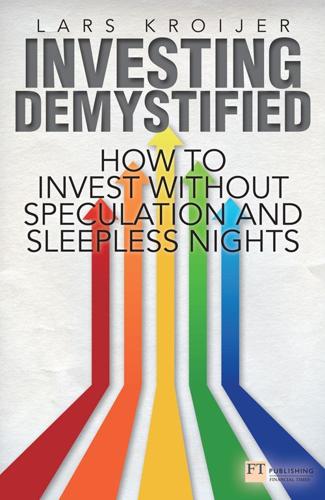
Investing Demystified: How to Invest Without Speculation and Sleepless Nights
by
Lars Kroijer
Published 5 Sep 2013
As the mutual fund industry grew so did the index-tracking industry. The index-tracking firms were not generally as widely known as the mutual funds, probably in large part because their low fees did not leave a lot of room for general marketing expense. They were led by Vanguard and the legendary John Bogle. The growth in the index trackers was a natural extension of the disaggregation that the finance industry had moved slowly towards for decades. Disaggregation is perhaps too big a term and I’m sure that nobody had a grand plan, but the basic idea was that you paid for what you got. If you only wanted market exposure as defined by the creation of some index, you only paid for that, with the simplicity of the product continuously pushing down its costs.
…
Even a strong leader in its sector, like Legal & General in the UK, does not have a broadly diversified world portfolio. It has an index fund of the top 100 blue-chip companies, but this is quite different from any kind of world equity index. Also, that product comes at an annual charge of 1% plus extra expenses of 0.15%. John Bogle, the founder of Vanguard, would be aghast at those kinds of fees. So if you wanted to gain access to a world equity portfolio through Legal & General you would be forced to put a portfolio of index funds together yourself, instead of having a one-stop product like a world equity product. Generally speaking, some index products can be incredibly expensive and best avoided.

MONEY Master the Game: 7 Simple Steps to Financial Freedom
by
Tony Robbins
Published 18 Nov 2014
It was the most provocative, probing interview of my long career, a reaction shared, I’m sure, by the other souls with strong investment values and sharp financial minds who populate this fine book. This book will enlighten you and reinforce your understanding of how to master the money game and, in the long run, earn your financial freedom.” —John C. Bogle, founder, the Vanguard Group and the Vanguard index funds, #1 largest mutual funds in the world “This book is not the typical financial book in any way. It is packed with wisdom and vital philosophies to enrich your life. A lot of books out there have more sizzle than steak to offer. Tony’s is different.
…
SECTION 5 UPSIDE WITHOUT THE DOWNSIDE: CREATE A LIFETIME INCOME PLAN Chapter 5.1: Invincible, Unsinkable, Unconquerable: The All Seasons Strategy Chapter 5.2: It’s Time to Thrive: Storm-Proof Returns and Unrivaled Results Chapter 5.3: Freedom: Creating Your Lifetime Income Plan Chapter 5.4: Time to Win: Your Income Is the Outcome Chapter 5.5: Secrets of the Ultrawealthy (That You Can Use Too!) SECTION 6 INVEST LIKE THE .001%: THE BILLIONAIRE’S PLAYBOOK Chapter 6.0: Meet the Masters Chapter 6.1: Carl Icahn: Master of the Universe Chapter 6.2: David Swensen: A $23.9 Billion Labor of Love Chapter 6.3: John C. Bogle: The Vanguard of Investing Chapter 6.4: Warren Buffett: The Oracle of Omaha Chapter 6.5: Paul Tudor Jones: A Modern-Day Robin Hood Chapter 6.6: Ray Dalio: A Man for All Seasons Chapter 6.7: Mary Callahan Erdoes: The Trillion-Dollar Woman Chapter 6.8: T. Boone Pickens: Made to Be Rich, Made to Give Chapter 6.9: Kyle Bass: The Master of Risk Chapter 6.10: Marc Faber: The Billionaire They Call Dr.
…
In this book, you won’t get talking heads, and you won’t get my opinions, either. You’ll hear it straight from the masters of the game: self-made billionaires, Nobel laureates, and financial titans. Here’s just a sampling of a few of the masters of money that you will be learning from in the pages ahead: • John C. Bogle, the 85-year-old sage with 64 years of stock market history and the founder of the Vanguard Group, the number one mutual fund company in the world; • Ray Dalio, founder of the largest hedge fund on the planet, with $160 billion in assets; • David Swensen, one of the greatest institutional investors of all time, who grew Yale University’s endowment from $1 billion to more than $23.9 billion in less than two decades; • Kyle Bass, a man who turned $30 million in investments into $2 billion in two years during the subprime crisis; • Carl Icahn, who has outperformed Warren Buffett, the market, and virtually everyone else in the last one-, five-, and ten-year cycles; • Mary Callahan Erdoes, whom many consider to be the most powerful woman in finance.
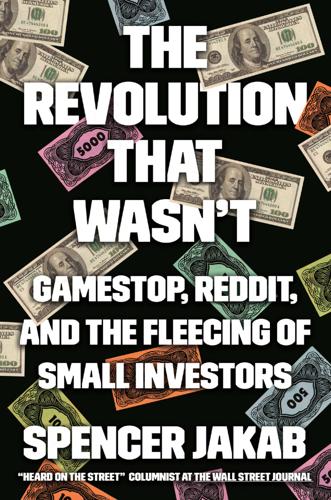
The Revolution That Wasn't: GameStop, Reddit, and the Fleecing of Small Investors
by
Spencer Jakab
Published 1 Feb 2022
As for skill, while I do believe that it exists, it is very hard to distinguish statistically from luck over just a handful of years. Not one of the five Morningstar “fund managers of the decade” through 2010 even managed to beat the market in the next ten years. The only certainty with funds is their cost. The late John Bogle, the founder of the index fund pioneer Vanguard Group, ran the numbers on mutual funds using the example of a thirty-year-old earning $30,000 a year who saves 10 percent of her salary and gets a 3 percent annual raise. Assuming that the stock market rose by 7 percent a year, she would have $561,000 saved by age seventy in a typical actively managed mutual fund if it matched the market return before fees and other costs.
…
BACK TO NOTE REFERENCE 4 Murray Coleman, “SPIVA: 2020 Mid-year Active vs. Passive Scorecard, Index Fund Advisors,” Index Fund Advisors blog post, October 7, 2020, www.ifa.com/articles/despite_brief_reprieve_2018_spiva_report_reveals_active_funds_fail_dent_indexing_lead_-_works. BACK TO NOTE REFERENCE 5 John Bogle, “The Arithmetic of ‘All-in’ Investment Expenses,” Financial Analysts Journal 70, no. 1 (2014): https://doi.org/10.2469/faj.v70.n1.1. BACK TO NOTE REFERENCE 6 Larry Swedroe, “Older Investors Handled Last Year’s Volatility Worst,” The Evidence-Based Investor, April 9, 2021, www.evidenceinvestor.com/older-investors-handled-last-years-volatility-worst-morningstar.
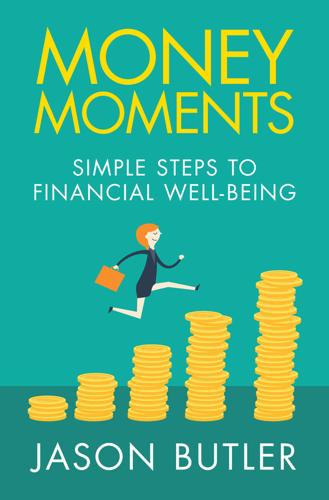
Money Moments: Simple Steps to Financial Well-Being
by
Jason Butler
Published 22 Nov 2017
Berrett-Koehler Publishers, Inc. 2014. Smarter Investing 3rd edn: Simpler Decisions for Better Results (Financial Times Series) by Tim Hale. FT Publishing International; 3 edition, 2013. The Little Book of Common Sense Investing: The Only Way to Guarantee Your Fair Share of Stock Market Returns (Little Books. Big Profits) by John C. Bogle. John Wiley & Sons; Updated and Revised edition (7 Dec. 2017). The Little Book of Bahavioral Investing: How Not to Be Your Own Worst Enemy by James Montier. John Wiley & Sons, Inc., Hoboken, New Jersey, 2010. DIGITAL RESOURCES Boring Money – www.boringmoney.co.uk Describes itself as ‘like the lovechild of a financial magazine and TripAdvisor’.
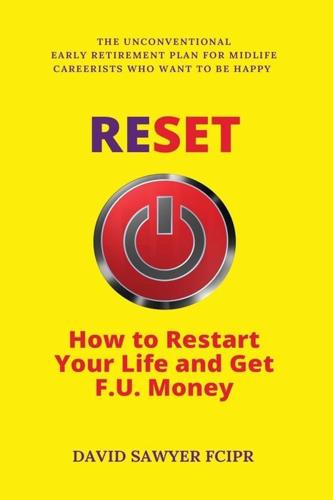
Reset: How to Restart Your Life and Get F.U. Money: The Unconventional Early Retirement Plan for Midlife Careerists Who Want to Be Happy
by
David Sawyer
Published 17 Aug 2018
[358] most important economist of the late 20th century: “Paul Samuelson – Wikipedia.” toreset.me/358. [359] “A Challenge to Judgment”: “The inspiration for John Bogle’s great invention – MarketWatch.” 5 Mar. 2014, toreset.me/359. [360] $403bn: “VFINX - Vanguard 500 Index Fund Investor Shares | Vanguard.” toreset.me/360. [361] 29% of the entire US market: “Index funds to surpass active fund assets in U.S. by 2024: Moody’s.” 2 Feb. 2017, toreset.me/361. [362] “Something new under the sun”: “The inspiration for John Bogle’s great invention – MarketWatch.” 5 Mar. 2014, toreset.me/362. [363] but it’s a lot more rational than us: “Is the Market Rational?
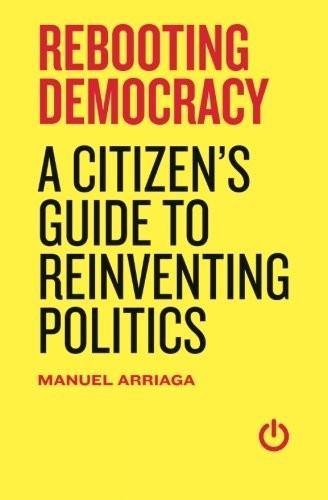
Rebooting Democracy: A Citizen's Guide to Reinventing Politics
by
Manuel Arriaga
Published 1 Jan 2014
Whenever managers and the traders they oversee sustainedly engage in practices that put the very existence of the whole bank at stake—thus risking wiping out all the capital invested by shareholders whose interests they supposedly represent—our notions of delegation deserve some serious rethinking. These problems are addressed at length in The Battle for the Soul of Capitalism by John Bogle (founder of Vanguard, one of the world’s largest mutual fund companies) and his later joint work with Alfred Rappaport (professor at the Kellogg Graduate School of Management at Northwestern University), Saving Capitalism From Short-Termism. [ix] At least beyond the casual exchange of a couple of provocative remarks between friends or family members of different political persuasions, both of whom are guaranteed to stick to well-defined roles during the exchange—e.g., “the liberal” and “the conservative”—and none of them actually considering the content of the other’s remarks.

Fred Schwed's Where Are the Customers' Yachts?: A Modern-Day Interpretation of an Investment Classic
by
Leo Gough
Published 22 Aug 2010
That might mean investing less, or it might mean spreading the cash across different, but similar vehicles, like having several savings accounts in different banks. 51 THE ‘FAT, STUPID PEASANT’ APPROACH ‘[After selling shares at a profit] … a long time later it turns out that I should have just bought them, and thereafter sat on them like a fat, stupid peasant. A peasant, however, who is rich beyond his limited dreams of avarice.’ DEFINING IDEA… Time is your friend; impulse is your enemy. ~ JOHN BOGLE, FAMOUS INVESTOR In this book we have identified two promising routes to a making a good return in the stock market: index investing and buying companies with good fundamentals at a time when their share prices are low. The first is extremely easy to do, and although it can never perform better than the index that it follows, that really shouldn’t matter very much, since it will still probably produce a better return than investing in any other type of financial security over the long term.
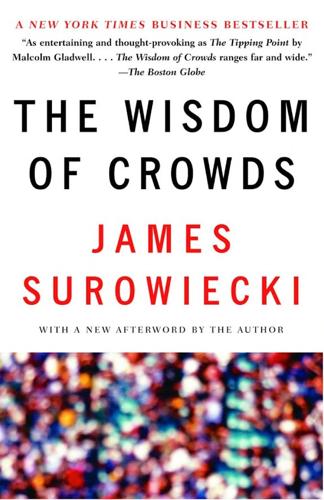
The Wisdom of Crowds
by
James Surowiecki
Published 1 Jan 2004
The Chase quote is from James Shanteau, “Expert Judgment and Financial Decision Making,” paper prepared for Risky Business: Risk Behavior and Risk Management, edited by Bo Green (Stockholm: Stockholm University, 1995). This paper includes an excellent survey of expert studies. Also see Shanteau, “Domain Differences in Expertise,” Kansas State University unpublished paper (2002), http://www.ksu.edu/psych/cws/downloads.htm. The numbers on mutual-fund performance are from John Bogle, John Bogle on Investing (New York: McGraw Hill, 2001): 20. J. Scott Armstrong, “The Seer-Sucker Theory: The Value of Experts in Forecasting,” Technology Review 83 (June–July 1980): 16–24. Shanteau, “Expert Judgment and Financial Decision Making”: 2. See also Shanteau, “Why Do Experts Disagree,” in Risk Behaviour and Risk Management in Business Life, edited by B.

file:///C:/Documents%20and%...
by
vpavan
The ICI also doesn't count the high costs charged by the 5 percent of funds that go out of business every year. Nor does the ICI consider that the average fund holds between 5 percent and 7 percent of its assets in cash. That money is never invested in the stock market, yet you pay a management fee on it, and thus there is an "opportunity" cost that shows up in reduced returns. John Bogle, the founder of the Vanguard Group and the person who pioneered index funds, calls the ICI's claim that fund costs have declined "sheer, unadulterated bologna." Bogle says the true cost of owning an equity fund is more like 2.5 percent, a long way from 1.4 percent. Some experts, such as Don Phillips, managing director of Morningstar Inc., a Chicago company that rates mutual funds, believes funds with higher expense ratios pose special problems.
…
Warren Buffett, the Berkshire Hathaway chairman, has been an avid champion of plain English SEC documents, more-transparent accounting, low-cost mutual funds, and many other pro-investor initiatives. His annual report to shareholders is a model of how companies should communicate with their investors. You can read it at www.berkshirehathaway.com. Vanguard founder John Bogle has been a thorn in the side of the mutual fund industry for fifty years. He is convinced that the lower fees, lower portfolio turnover, and fewer capital gains distributions of index funds make them the best possible investment for individuals. He makes a compelling case in his speeches, books, and other publications, all of which can be found on the Vanguard Web site (www.vanguard.com/bogle).

The Great Mental Models: General Thinking Concepts
by
Shane Parrish
Published 22 Nov 2019
He used the descriptor “appeals of indirection”, and each time when “hired to sell a product or service, he instead sold whole new ways of behaving, which appeared obscure but over time reaped huge rewards for his clients and redefined the very texture of American life.”8 What are you trying to avoid? Instead of thinking through the achievement of a positive outcome, we could ask ourselves how we might achieve a terrible outcome, and let that guide our decision-making. Index funds are a great example of stock market inversion promoted and brought to bear by Vanguard’s John Bogle.9 Instead of asking how to beat the market, as so many before him, Bogle recognized the difficulty of the task. Everyone is trying to beat the market. No one is doing it with any consistency, and in the process real people are losing actual money. So he inverted the approach. The question then became, how can we help investors minimize losses to fees and poor money manager selection?
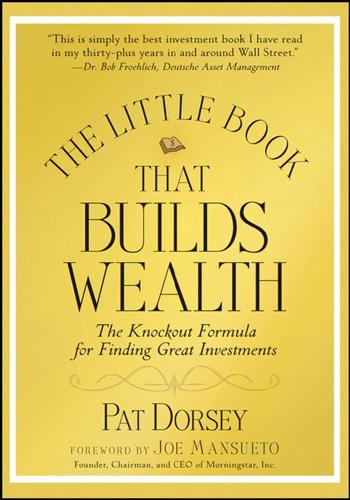
The Little Book That Builds Wealth: The Knockout Formula for Finding Great Investments
by
Pat Dorsey
Published 1 Mar 2008
The Little Book of Value Investing, where Christopher Browne, managing director of Tweedy, Browne Company, LLC, the oldest value investing firm on Wall Street, simply and succinctly explains how value investing, one of the most effective investment strategies ever created, works, and shows you how it can be applied globally. The Little Book of Common Sense Investing, where Vanguard Group founder John C. Bogle shares his own time-tested philosophies, lessons, and personal anecdotes to explain why outperforming the market is an investor illusion, and how the simplest of investment strategies—indexing—can deliver the greatest return to the greatest number of investors. The Little Book That Makes You Rich, where Louis Navellier, financial analyst and editor of investment newsletters since 1980, offers readers a fundamental understanding of how to get rich using the best in growth investing strategies.

Your Money: The Missing Manual
by
J.D. Roth
Published 18 Mar 2010
As you'll learn in the next section, this makes them a great long-term investment. Index funds Because index funds try to match an index and not beat it, they don't require much intervention from the fund manager, which makes their costs much lower than those of actively managed funds. In The Little Book of Common Sense Investing (Wiley, 2007), John Bogle writes that the average actively managed fund has a total of about 2% in annual costs, whereas a typical passive index fund's costs are only about 0.25%. Although this 1.75% difference in costs between actively and passively managed mutual funds may not seem like much, there's a growing body of research that says it makes a huge difference in long-term investment results.
…
For instance, if you only have 34% in bonds instead of your target 40%, add more bonds to bring your portfolio back into balance. By doing this, you don't have to worry about taxes, but you will need some cash on hand. Though many investment professionals swear by rebalancing, some research shows that it's not as important as people once thought. In The Little Book of Common Sense Investing, John Bogle writes, "Rebalancing is a personal choice, not a choice that statistics can validate. There's nothing the matter with doing it…but also no reason to slavishly worry about small changes…" In other words, rebalance if your asset allocation is way out of line but don't worry about small changes—especially if you'd end up paying a lot of fees by rebalancing.
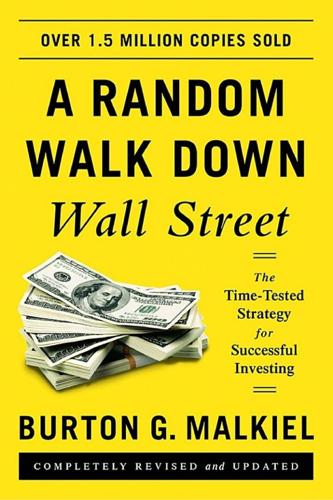
A Random Walk Down Wall Street: The Time-Tested Strategy for Successful Investing (Eleventh Edition)
by
Burton G. Malkiel
Published 5 Jan 2015
ETFs require the payment of transactions costs, however, including brokerage fees* and bid-asked spreads. No-load index mutual funds will better serve investors who will be accumulating index shares over time in small amounts. I suggest that you avoid the temptation to buy or sell ETFs at any hour of the day and to buy such funds on margin. I agree with John Bogle, founder of the Vanguard Group, who says, “Investors cut their own throats when they trade ETFs.” If you are so tempted, follow the practice of Little Miss Muffet and run far away from the spiders and their siblings. In the table on page 392, I list the ETFs that can be used to build your portfolio.
…
This acknowledgment of my debt to her is the largest understatement of all. Finally, I would like to acknowledge with deep gratitude the assistance of the following individuals who made important contributions to earlier editions. They include Peter Asch, Leo Bailey, Howard Baker, Jeffrey Balash, David Banyard, William Baumol, Clair Bien, G. Gordon Biggar Jr., John Bogle, Lynne Brady, John Brennan, Markus Brunnermeier, Claire Cabelus, Lester Chandler, Andrew Clarke, Abby Joseph Cohen, Douglas Daniels, Pia Ellen, Andrew Engel, Steve Feinstein, Barry Feldman, Roger Ford, Stephen Goldfeld, William Grant, Leila Heckman, William Helman, Roger Ibbotson, Deborah Jenkins, Barbara Johnson, George S.
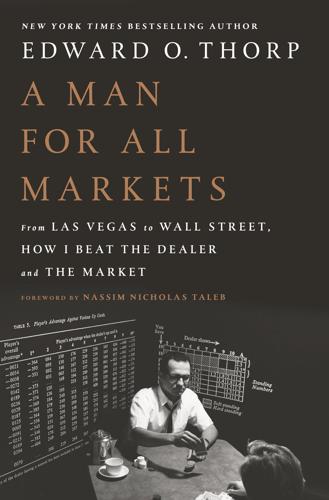
A Man for All Markets
by
Edward O. Thorp
Published 15 Nov 2016
waiting fifteen years The NASDAQ Composite finally exceeded its March 2000 peak in April of 2015. However, investors were still behind more than 20 percent after adjusting for inflation. weren’t available yet Bogle on Mutual Funds, pp. 169–70 says “The indexing concept was…introduced…to the mutual fund industry in 1976.” and in fact by the author himself, John C. Bogle. or the stock market According to a Fidelity Research Institute Report dated February 2007 stocks averaged about 10 percent a year, beating residential real estate by more than 4 percent a year for 1963–2005 and by more than 5.5 percent annualized over 1835–2005. Bonds also did better than residential real estate.
…
New York: Houghton Mifflin, 1985. Black, Fischer, and Myron Scholes. “The Pricing of Options and Corporate Liabilities.” Journal of Political Economy 81.3 (1973): 637–54. Blackwood, Kevin, and Larry Barker. Legends of Blackjack: True Stories of Players Who Crushed the Casinos. Kindle EBook, April 5, 2009. Bogle, John C. Bogle on Mutual Funds: New Perspectives for the Intelligent Investor. Burr Ridge, IL: Irwin, 1994. Edwardothorp.com. View articles written by the author. Feller, William. An Introduction to Probability Theory and Its Applications, Volume I. New York: Wiley, 1957, 1968. Fox, Justin. The Myth of the Rational Market: A History of Risk, Reward, and Delusion on Wall Street.

Investing Amid Low Expected Returns: Making the Most When Markets Offer the Least
by
Antti Ilmanen
Published 24 Feb 2022
I capped them near 500 and focused on more recent research – apologies to others. For excellent books with as broad coverage as this one, see Lussier (2013), Ang (2014), and Pedersen (2015). I also recommend viewing the Words from the Wise series in aqr.com, where we interviewed many luminaries (John Bogle, Charley Ellis, Robert Engle, Marty Leibowitz, Harry Markowitz, Richard Thaler, Ed Thorp, and Roger Urwin) who have influenced our thinking. For two other wonderful sets of interviews and profiles of modern finance giants, see Towle (2014) and Lo-Foerster (2021). Chapter 2 The Secular Low Expected Return Challenge Expected returns in all major asset classes have fallen to near historic lows.
…
The FLAM has less bite in this case because equity markets are highly correlated across markets, so the effective increase in breadth is limited. This is particularly true for the US whose market cap is close to half of global equities and whose flagship companies have a large footprint outside the US. For investors in smaller countries, home bias is more damaging. That said, I find it puzzling that giants John Bogle and Warren Buffett agreed in endorsing highly US-centric portfolios (motivated by some mix of greater familiarity and belief in US entrepreneurship, property rights, etc.). Well, they got it right in the 2010s. At least theirs are better arguments for home bias than hindsighted medium-term return chasing: The US focus is often more popular after a strong decade.
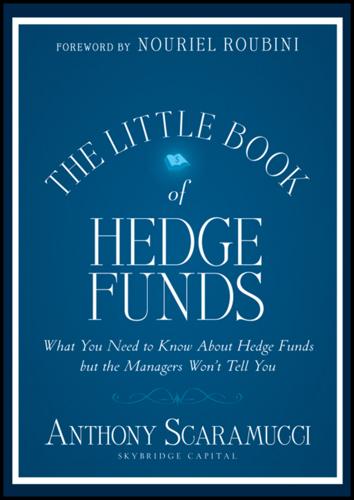
The Little Book of Hedge Funds
by
Anthony Scaramucci
Published 30 Apr 2012
Each book offers a unique perspective on investing, allowing the reader to pick and choose from the very best in investment advice today. Books in the Little Book Big Profits series include: The Little Book That Still Beats the Market by Joel Greenblatt The Little Book of Value Investing by Christopher Browne The Little Book of Common Sense Investing by John C. Bogle The Little Book That Makes You Rich by Louis Navellier The Little Book That Builds Wealth by Pat Dorsey The Little Book That Saves Your Assets by David M. Darst The Little Book of Bull Moves by Peter D. Schiff The Little Book of Main Street Money by Jonathan Clements The Little Book of Safe Money by Jason Zweig The Little Book of Behavioral Investing by James Montier The Little Book of Big Dividends by Charles B.

The Psychology of Money: Timeless Lessons on Wealth, Greed, and Happiness
by
Morgan Housel
Published 7 Sep 2020
But more important is that as much as we recognize the role of luck in success, the role of risk means we should forgive ourselves and leave room for understanding when judging failures. Nothing is as good or as bad as it seems. Now let’s look at the stories of two men who pushed their luck. John Bogle, the Vanguard founder who passed away in 2019, once told a story about money that highlights something we don’t think about enough: At a party given by a billionaire on Shelter Island, Kurt Vonnegut informs his pal, Joseph Heller, that their host, a hedge fund manager, had made more money in a single day than Heller had earned from his wildly popular novel Catch-22 over its whole history.

The Simple Path to Wealth: Your Road Map to Financial Independence and a Rich, Free Life
by
J L Collins
Published 17 Jun 2016
By design they are almost precisely the same. Since we can invest in VTSAX, going forward I’ll be using it as our proxy for the stock market overall. Last time I checked, and this will vary, VTSAX held about 3,700 companies. This means that in owning VTSAX, you own a piece of all these businesses. In 1976 John Bogle, the founder of The Vanguard Group, launched the world’s first index fund. It tracked the S&P 500 index, allowing investors to own the largest 500 or so companies in the U.S. in one low-cost fund. It instantly became the single best tool for taking advantage of the market’s relentless climb. Then, in 1992, Vanguard created the Total Stock Market Index Fund and investors could own in this one fund not just the 500 largest U.S. companies, but virtually the entire U.S. stock market.

Retire Before Mom and Dad
by
Rob Berger
Published 10 Aug 2019
With this approach, you might invest 90% of your money in the Vanguard 2060 fund and 10% in the Vanguard small cap fund. 3-Fund Portfolio Our next option involves just three mutual funds. It’s an approach popularized by a group of investors called the Bogleheads. Don’t let the name fool you. This is a serious group of passionate and knowledgeable investors. They named their group after Vanguard’s founder, John Bogle. They even have a conference each year. The 3-Fund Portfolio requires three types of index mutual funds: U.S. Stocks Foreign Stocks U.S. Bonds That’s it. Now the big question. How much money do you put in each type of fund? One option would be to follow what Vanguard does in its TDR funds.

A Mathematician Plays the Stock Market
by
John Allen Paulos
Published 1 Jan 2003
Question: How many efficient market theorists does it take to change a light bulb? Answer: None. If the light bulb needed changing the market would have already done it. Efficient market theorists tend to believe in passive investments such as broad-gauged index funds, which attempt to track a given market index such as the S&P 500. John Bogle, the crusading founder of Vanguard and presumably a believer in efficient markets, was the first to offer such a fund to the general investing public. His Vanguard 500 fund is unmanaged, offers broad diversification and very low fees, and generally beats the more expensive, managed funds. Investing in it does have a cost, however: One must give up the fantasy of a perspicacious gunslinger/investor outwitting the market.

Personal Investing: The Missing Manual
by
Bonnie Biafore
,
Amy E. Buttell
and
Carol Fabbri
Published 24 May 2010
(You can adjust them later on, if necessary.) Automatic deposits also help you succeed by regularly contributing to your plan through thick and thin, good times and bad, high prices and low (read about dollar-cost averaging on page 4). 3. Repeat step 2 for each additional asset class. That’s it! Easy, huh? Manage Your Portfolio 167 John Bogle, the founder of the Vanguard Group, Inc., is a pioneer of low-cost mutual funds and has written several great books (http://tinyurl.com/boglebooks) about the benefits of index funds. Stealing a Lazy Portfolio from an Expert If you don’t want to design a lazy portfolio of your own, you can use one that financial experts have put together.

Wall Street Meat
by
Andy Kessler
Published 17 Mar 2003
Back in 1980, a scant $40 billion was being professionally managed by mutual funds. The rest was in pension funds, foundations like the Ford Foundation, or in banks. These “professionals” were terrible, most couldn’t pick stocks that did better than the market. Books were being written about chimpanzees and dart throwers doing better than professional money managers. John Bogle at Vanguard in Pennsylvania had a solution, i.e., if you can’t beat the market, just become the market. Index the whole thing. The bulk of the market was represented by the Standards and Poor (S&P) 500 index, the top 500 valuable public companies in the U.S. Bogle offered an index fund that did neither better, nor worse than the market, and it caught on as a savior of investors.

Quit Like a Millionaire: No Gimmicks, Luck, or Trust Fund Required
by
Kristy Shen
and
Bryce Leung
Published 8 Jul 2019
The most dangerous thing about the Investor pathway is that it’s easy to delude yourself into thinking you’ve got the skills, when any initial wins could be just due to luck. Consistently successful Investors are exceedingly rare. As I mentioned in chapter 10, only 15 percent of active fund managers on Wall Street manage to beat the market in any given year. NOTABLE INVESTORS Benjamin Graham Warren Buffett John Bogle THE OPTIMIZER Income Average Savings Exceptional Investments Average Optimizers make their fortune by obsessively controlling their spending.

I Will Teach You To Be Rich
by
Sethi, Ramit
Published 22 Mar 2009
In short, mutual funds are prevalent because of their convenience, but because actively managed mutual funds are, by definition, expensive, they’re not the best investment any more. Active management can’t compete with passive management, which takes us to index funds, the more attractive cousin of mutual funds. Index Funds: The Attractive Cousin in an Otherwise Unattractive Family In 1975, John Bogle, the founder of Vanguard, introduced the world’s first index fund. These simple funds use computers to buy stocks and match the market (such as the S&P 500 or NASDAQ). Instead of having a mutual fund’s expensive staff of “experts” who try to beat the market, index funds set a lower bar: A computer matches the indexes by automatically matching the makeup of the market.
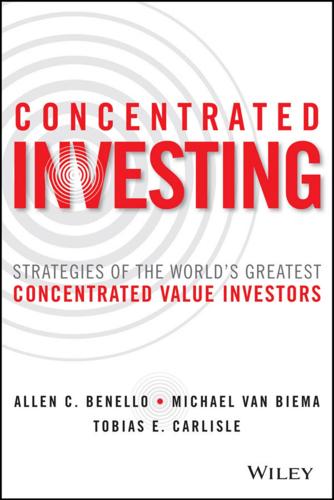
Concentrated Investing
by
Allen C. Benello
Published 7 Dec 2016
Illustrating his tendency toward understating his own achievements, Simpson says, “Concentration may be the only way I can add value to the process.”160 Simpson is also skeptical that any investor can add value over a longer period of time by trading vigorously. He doesn’t believe, for example, that the ease of buying and selling exchange traded funds (ETFs) will help most investors because most investors will trade them, and tend to buy when they are high and sell when they are low. He agrees with John Bogle, who prefers index funds to ETFs, not because they’re cheaper—the fees on index funds might be a few basis points more—but because investors are more likely to buy them and put them away. They’re not likely to trade them. The ETF’s big advantage— that they can be traded throughout the entire day—will turn out to be a negative for most investors, including professional investors, because it will make them more likely to trade the ETF for a few percentage points, which won’t work over a long period of time.

Practical Doomsday: A User's Guide to the End of the World
by
Michal Zalewski
Published 11 Jan 2022
If you invest in stable, fairly valued enterprises, it doesn’t matter if some cybersecurity startup is trading at 100 times its revenue. It is, however, true that in a frothy market, finding good investments requires more effort; throwing darts at the board won’t do. This brings us, in a roundabout way, to the topic of index funds. These passively managed investment vehicles are the brainchild of John C. Bogle, the founder of The Vanguard Group. Bogle observed that most brokerage customers—and most professional fund managers, for that matter—didn’t seem to be able to beat the returns of an index (the Dow Jones, S&P 500, or a similar capitalization-weighed sum of the prices of many stocks). He argued that the smartest thing for an investor to do is put their money in an investment fund containing such a blend of equities, managed by his firm for a very low fee.
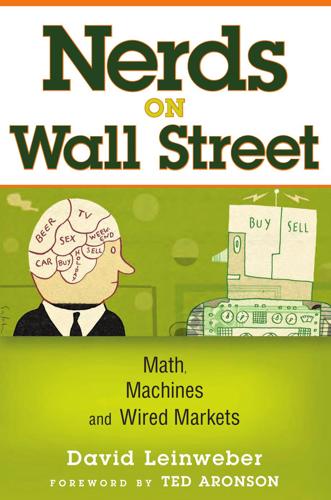
Nerds on Wall Street: Math, Machines and Wired Markets
by
David J. Leinweber
Published 31 Dec 2008
We see an important part of the beginnings of financial information technology innovation in the form of the blinking, humming refrigeratorsized computers of the 1970s. Bill Fouse, at Wells Fargo, bought a Prime computer and used it to run the first index fund,5 the granddaddy of quantitative equity investing and the vast systematic investment industry.6 John C. Bogle founded Vanguard in 1974, doing the same thing for retail mutual fund investors. Alas, I can’t find a picture of Bogle and his first computer, so Figure 4.2 shows Fouse with his. Further innovation came in the form of factor models, notably “Barr’s better betas,” a fundamental multifactor model developed by Barr Rosenberg at Berkeley.

Fortunes of Change: The Rise of the Liberal Rich and the Remaking of America
by
David Callahan
Published 9 Aug 2010
He has defended the tax loophole on carried interest income for hedge funds and private equity firms, has sought to cut the fees that Wall Street pays to the Securities and Exchange Commission (SEC), and has tried to block stricter oversight of the credit agencies that rate Wall Street debt. In a 2009 interview with the New York Times, John Bogle, the founder of the mutual fund colossus Vanguard Group, said about Schumer, “He is serving the parochial interest of a very small group of financial people, bankers, investment bankers, fund managers, private equity firms, rather than serving the general public.”3 Thanks to friends like Schumer, Wall Street was allowed to blow itself up— and take the economy with it—after an era of risky and unrestrained financial engineering.

Finance and the Good Society
by
Robert J. Shiller
Published 1 Jan 2012
If we are seeing the bursting of a bubble in investment manager compensation, we may see relatively lean times in coming years for people in this line of business. Anyone contemplating going into this line of work must take such considerations into mind. In his book Enough! True Measures of Money, Business, and Life, the founder of the Vanguard Funds, John C. Bogle, laments that many in the nancial community are milking society based on their false hopes of extraordinary pro ts. There must be some element of truth here, but the true magnitude of this “milking” is hard to pin down, as Bogle himself recognizes: “I know of not one academic study that has systematically attempted to calculate the value extracted by our nancial system from the returns earned by investors.”13 It will be just as hard to measure the bene t that the nancial community provides in improving the allocation of resources and incentives to achieve business success.

Inner Entrepreneur: A Proven Path to Profit and Peace
by
Grant Sabatier
Published 10 Mar 2025
Christensen Small Giants—Bo Burlingham Lost and Founder—Rand Fishkin Investing The Education of a Value Investor—Guy Spier The Dhandho Investor—Mohnish Pabrai Richer, Wiser, Happier—William Green The Essays of Warren Buffett—Lawrence A. Cunningham, compiler Poor Charlie’s Almanack—Charles T. Munger The Bogleheads’ Guide to Investing—Taylor Larimore, Mel Lindauer, and Michael LeBoeuf Common Sense on Mutual Funds—John C. Bogle The Four Pillars of Investing—William Bernstein The Intelligent Investor—Benjamin Graham The Only Investment Guide You’ll Ever Need—Andrew Tobias Real Estate Investing The Millionaire Real Estate Investor—Gary Keller with Dave Jenks and Jay Papasan The Book on Rental Property Investing—Brandon Turner Retire Early with Real Estate—Chad Carson What Every Real Estate Investor Needs to Know about Cash Flow—Frank Gallinelli Life In Love with the World—Yongey Mingyur Rinpoche The Art of Living—Thich Nhat Hanh When Breath Becomes Air—Paul Kalanithi Devatma Shakti (Kundalini) Divine Power—Swami Vishnu Tirtha Start Where You Are—Pema Chödrön Going to Pieces without Falling Apart—Mark Epstein The Scripture of the Golden Eternity—Jack Kerouac The Top Five Regrets of the Dying—Bronni Ware The Wisdom of Insecurity—Alan Watts Man’s Search for Meaning—Viktor E.
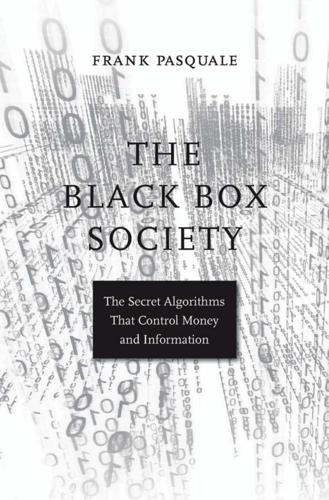
The Black Box Society: The Secret Algorithms That Control Money and Information
by
Frank Pasquale
Published 17 Nov 2014
HFT mavens effectively tax the rest of the market.121 If you ever wonder exactly what 401(k) “expense ratios” or other mysterious fi nance fees go toward, it may well be to help your fund manager anticipate and deflect HFT’ers arbitrage strategies. Armoring against HFT’ers (and all the other tricks and traps described in this chapter) takes expensive talent and software. The think tank Dēmos estimates that, over a lifetime, retirement account fees “can cost a median-income two-earner family nearly $155,000.”122 Investor John Bogle notes that a 2 percent fee applied over a 50-year investing lifetime would erode 63 percent of the value of an average account.123 Note, too, how the finance sector as a whole has little interest in stopping such wasteful activities. The more treacherous it becomes for outsiders to trade in the brave new world of computerized markets, the more they have to pay some knowledgeable insider a fee to fend off the piranhas.
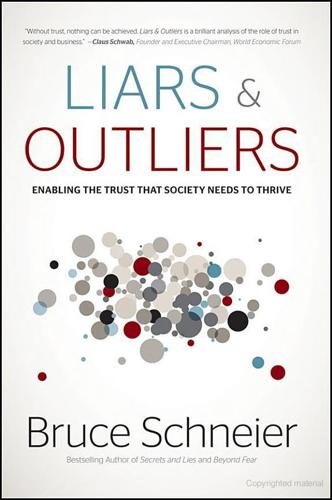
Liars and Outliers: How Security Holds Society Together
by
Bruce Schneier
Published 14 Feb 2012
Lynne Dallas (2011), “Short-Termism, the Financial Crisis and Corporate Governance,” San Diego Legal Studies Paper No. 11–052. Lawrence Mitchell (2011), Corporate Irresponsibility: America's Newest Export, Yale University Press. Alfred Rappaport (2011), Saving Capitalism from Short-Termism, McGraw-Hill. investors have access John C. Bogle (2005), The Battle for the Soul of Capitalism, Yale University Press. wicked problems C. West Churchman (1967), “Wicked Problems,” Management Science, 14:141–2. Horst Rittel and Melvin Webber (1973), “Dilemmas in a General Theory of Planning,” Policy Sciences, 4:155–69. E. Jeffrey Conklin (2006), Dialog Mapping: Building a Shared Understanding of Wicked Problems, John Wiley & Sons.
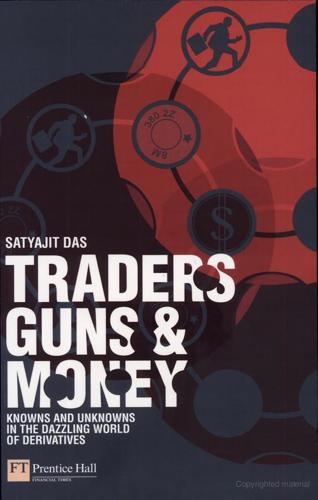
Traders, Guns & Money: Knowns and Unknowns in the Dazzling World of Derivatives
by
Satyajit Das
Published 15 Nov 2006
Not really, it is how the game is played. The trustee meetings were never the same again. Agents all The entire investment management process is flawed – projected returns are too high and actual returns are measured with tools that the fund managers and asset consultants choose. It is like getting a student to mark their own exams. John Bogle, the founder of Vanguard, a low-cost mutual fund manager, is the Bolshevik of the industry. His arguments are simple: fund expenses are too high; trading costs eat into returns as fund managers churn portfolios to the delight of dealers; hidden fees and charges eat into the value of investments; a small difference of 1% or 2% each year in return over 30 years is staggering.

How I Became a Quant: Insights From 25 of Wall Street's Elite
by
Richard R. Lindsey
and
Barry Schachter
Published 30 Jun 2007
Later screening techniques would search, characterize and quantify textual information from the web and SEC documents. See David Leinweber’s description of Codexa in this book. 8. The outside academic examiners included Bob Merton, Merton Miller, Stewart Myers, Steve Ross, Myron Scholes and Jay Light. Client representatives included Jon Hagler, Charley Ellis, John English, Peter Bernstein, John Bogle, Marvin Damsma, and Greta JWPR007-Lindsey May 18, 2007 11:41 Notes 345 Marshall. Fischer Black’s recommendation letters, rarely more than two or three sentences long, were to the point and a delight to read. 9. Lattice was an outgrowth of MJT. MJT was founded with Bill Lupien and Murray Finebaum from Instinet and John McCormack and myself from Batterymarch.
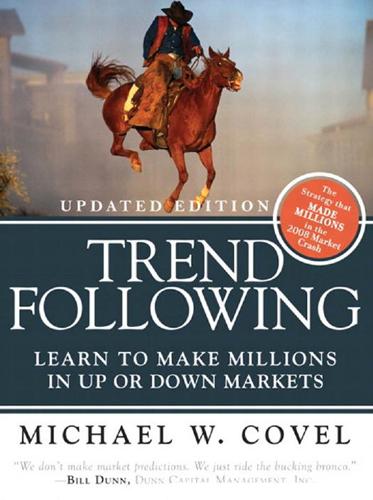
Trend Following: How Great Traders Make Millions in Up or Down Markets
by
Michael W. Covel
Published 19 Mar 2007
The fox— artful, sly and astute— represents the financial institution that knows many things about complex markets and sophisticated marketing. The hedgehog—whose sharp spines give it almost impregnable armor when it curls into a ball—is the financial institution that knows only one great thing: longterm investment success is based on simplicity. John C. Bogle The decision-making process is just that—a process. You can’t make decisions based on what you want the outcome to be. Michael Mauboussin and Kristen Bartholdson have presented a compelling argument for “process”: “In too many cases, investors dwell solely on outcomes without appropriate consideration of process.

Investment: A History
by
Norton Reamer
and
Jesse Downing
Published 19 Feb 2016
Investment Company Institute, 2013 Investment Company Fact Book, accessed 2014, http://www.ici.org/pdf/2013_factbook.pdf, 36 and 47. 55. Dan Culloton, “A Brief History of Indexing,” Fund Spy (blog), Morningstar, August 9, 2011, http://news.morningstar.com/articlenet/article .aspx?id=390749. 56. John C. Bogle, “The First Index Mutual Fund: A History of Vanguard Index Trust and the Vanguard Index Strategy,” Bogle Financial Markets Research Center, Vanguard, last modified 1997, http://www.vanguard .com/bogle_site/lib/sp19970401.html. 57. Ibid. 58. Ibid. 59. Investment Company Institute, 2013 Investment Company Fact Book, 36 and 47. 60.

The Relentless Revolution: A History of Capitalism
by
Joyce Appleby
Published 22 Dec 2009
Jared Diamond, Collapse: How Societies Choose to Fail or Succeed (New York, 2005). 13. Diana B. Henriques, “Madoff Scheme Kept Shipping Outward, Crossing Borders,” New York Times, December 20, 2008 14. Paul Krugman, “A Catastrophe Foretold,” New York Times, October 28, 2007. Four people—Doris Dungey, Nouriel Roubini, Brooksley Born, and John Bogle—clearly saw what was wrong with the prevailing financial incentives. See Bogle, “The Case of Corporate America Today,” Daedalus, 136 (Summer, 2007). 15. Alexei Barrionuevo, “Demand for a Say on the Way Out of Crisis,” New York Times, November 10, 2008. 16. Thomas L. Friedman, The World Is Flat: A Brief History of the Twenty-first Century (New York, 2005); Jeffrey A.

WTF?: What's the Future and Why It's Up to Us
by
Tim O'Reilly
Published 9 Oct 2017
Yet REI’s growth consistently outperforms both its publicly traded competitors and the entire S&P 500 retail index. Vanguard, the second-largest financial asset manager in the United States, with more than $4 trillion under management, is owned by the mutual funds whose performance it aggregates. John Bogle, its founder, invented the index fund as a way to keep fund management fees low, transferring much of the benefit of stock investing from money managers to its customers. Despite these counterexamples, the idea that extracting the highest possible profits and then returning the money to company management, big investors, and other shareholders is good for society has become so deeply rooted that it has been difficult for too long to see the destructive effects on society when shareholders are prioritized over workers, over communities, over customers.
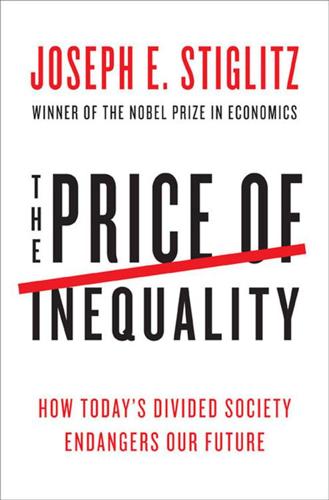
The Price of Inequality: How Today's Divided Society Endangers Our Future
by
Joseph E. Stiglitz
Published 10 Jun 2012
Edlin and Joseph E. Stiglitz, “Discouraging Rivals: Managerial Rent-Seeking and Economic Inefficiencies,” American Economic Review 85, no. 5 (December 1995): 1301–12; and Andrei Shleifer and Robert W. Vishny, “A Survey of Corporate Governance,” Journal of Finance 52, no. 2 (June 1997): 737–83. 39. John Bogle, the founder of Vanguard Group, an investment management company that manages approximately $1.6 trillion in funds, in his comments on Bebchuk and Fried, Pay without Performance. The Bogle quotation is from p. 483 of a review and summary of Bebchuk and Fried by Henry Tosi in Administrative Science Quarterly 50, no. 3 (September 2005): 483–87. 40.
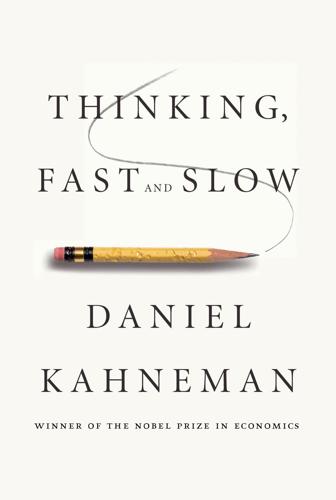
Thinking, Fast and Slow
by
Daniel Kahneman
Published 24 Oct 2011
wealth from amateurs: Research on stock trades in Taiwan concluded that the transfer of wealth from individuals to financial institutions amounts to a staggering 2.2% of GDP: Brad M. Barber, Yi-Tsung Lee, Yu-Jane Liu, and Terrance Odean, “Just How Much Do Individual Investors Lose by Trading?” Review of Financial Studies 22 (2009): 609–32. underperform the overall market: John C. Bogle, Common Sense on Mutual Funds: New Imperatives for the Intelligent Investor (New York: Wiley, 2000), 213. persistent differences in skill: Mark Grinblatt and Sheridan Titman, “The Persistence of Mutual Fund Performance,” Journal of Finance 42 (1992): 1977–84. Edwin J. Elton et al., “The Persistence of Risk-Adjusted Mutual Fund Performance,” Journal of Business 52 (1997): 1–33.

More Money Than God: Hedge Funds and the Making of a New Elite
by
Sebastian Mallaby
Published 9 Jun 2010
Steinhardt, Fine, Berkowitz & Company reported results for years to the end of September. To facilitate comparison, the S&P 500 numbers given here are also for the years to September. 9. See Robertson, “Hedge Fund Miseries,” p. 270. 10. Howard Berkowitz interview, August 28, 2007. Jerry Fine interview, August 29, 2007. For the Spacek quote, see John Bogle’s forward to Adam Smith, Supermoney (New York: John Wiley & Sons, 1972), p. xiii. 11. David Rocker, an analyst with Steinhardt, Fine, Berkowitz, recalls: “To make money on the short side you have to be a scrapper. The government is against you. The media was against you; it was un-American to be short.
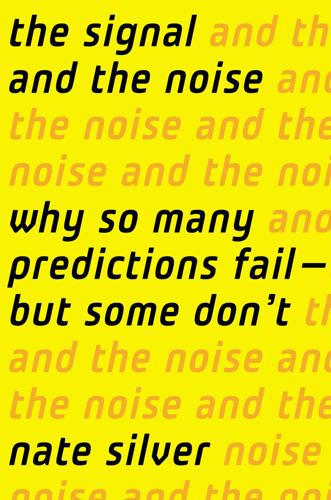
The Signal and the Noise: Why So Many Predictions Fail-But Some Don't
by
Nate Silver
Published 31 Aug 2012
Sorin Sorescu and Avanidhar Subrahmanyam, “The Cross-Section of Analyst Recommendations,” Recent Work, Anderson Graduate School of Management, UC Los Angeles, January 9, 2004. http://escholarship.org/uc/item/76x8k0cc;jsessionid=5ACA605CE152E3724AB2754A1E35FC6A#page-3. 66. Floyd Norris, “Another Technology Victim; Top Soros Fund Manager Says He ‘Overplayed’ Hand,” New York Times, April 29, 2000. http://www.nytimes.com/2000/04/29/business/another-technology-victim-top-soros-fund-manager-says-he-overplayed-hand.html?pagewanted=2&src=pm. 67. John C. Bogle, “Individual Investor, R.I.P.,” Wall Street Journal, October 3, 2005. 68. Jonathan Lewellen, “Institutional Investors and the Limits of Arbitrage,” Journal of Financial Economics, 102 (2011), pp. 62–80. http://mba.tuck.dartmouth.edu/pages/faculty/jon.lewellen/docs/Institutions.pdf. 69.
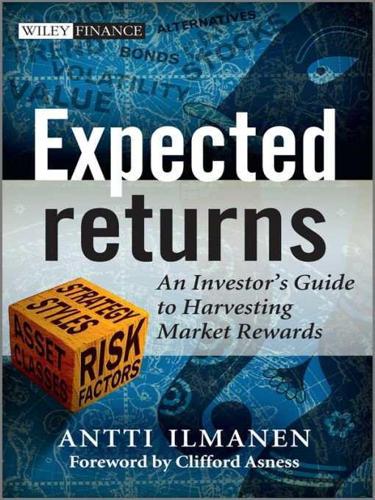
Expected Returns: An Investor's Guide to Harvesting Market Rewards
by
Antti Ilmanen
Published 4 Apr 2011
In contrast, frequent performance measurement in liquid assets enables skill to be differentiated from luck over a reasonable evaluation period. Moreover, only liquid markets give investors the flexibility to terminate, at a moderate cost, a manager that has disappointed. 28.5 COSTS Cost control is important because fees and costs feed directly to the bottom line of net returns. John Bogle likes to stress that cost differences across mutual funds can explain differences in net fund returns much better than any other feature can. (Among HFs, fee differences do not explain net return differences.) I review in Section 28.1 various ways to reduce costs but I also note that the virtue can be taken too far.
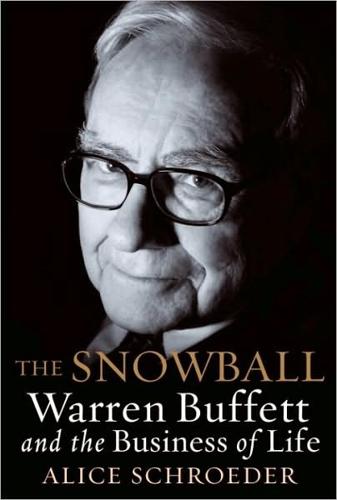
The Snowball: Warren Buffett and the Business of Life
by
Alice Schroeder
Published 1 Sep 2008
Marcia Vickers, Geoffrey Smith, Peter Coy, Mara Der Hovanseian, “When Wealth Is Blown Away,” BusinessWeek, March 26, 2001; Allan Sloan, “The Downside of Momentum,” Newsweek, March 19, 2001. 15. As of June 2001. From the Industry Standard’s Layoff Tracker, along with the Dot-Com Flop Tracker and the Ex-Exec Tracker. 16. Buffett was not the only one concerned about the implication of this relationship. John Bogle, retired chairman of Vanguard, wrote of it in April 2001. However, he concluded that “some version of reality” had returned to the stock market. What made Buffett’s speech noteworthy was not use of this particular metric but rather his pessimistic projection of what it meant. 17. One of Buffett’s main points was that companies—many of which had been taking gains from surpluses out of their pension plans—were irresponsibly using unrealistic rates of return assumptions and would have to adjust these to reality, which would show the plans to be less well funded or even underfunded. 18.